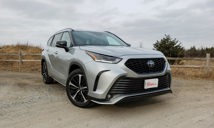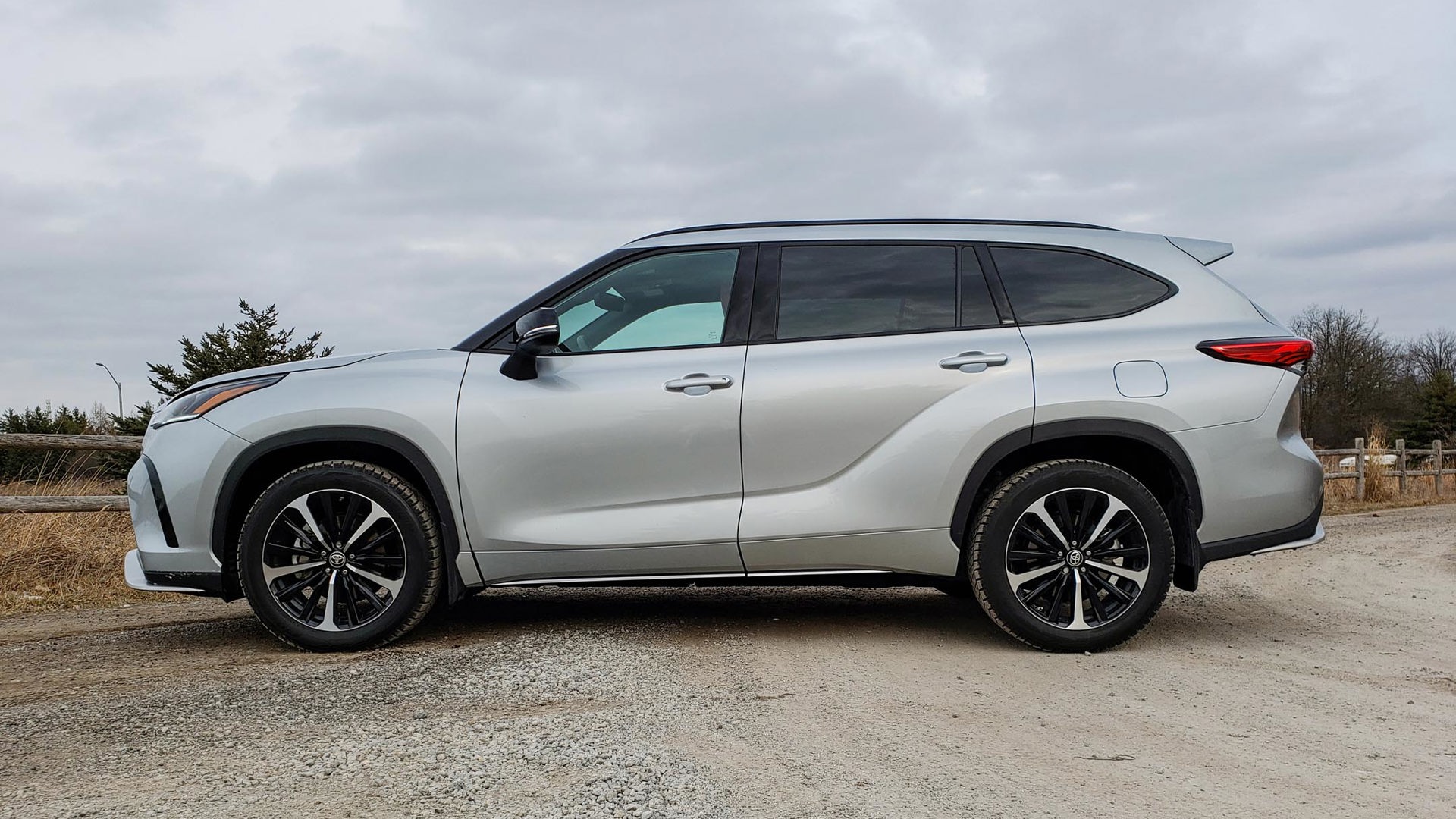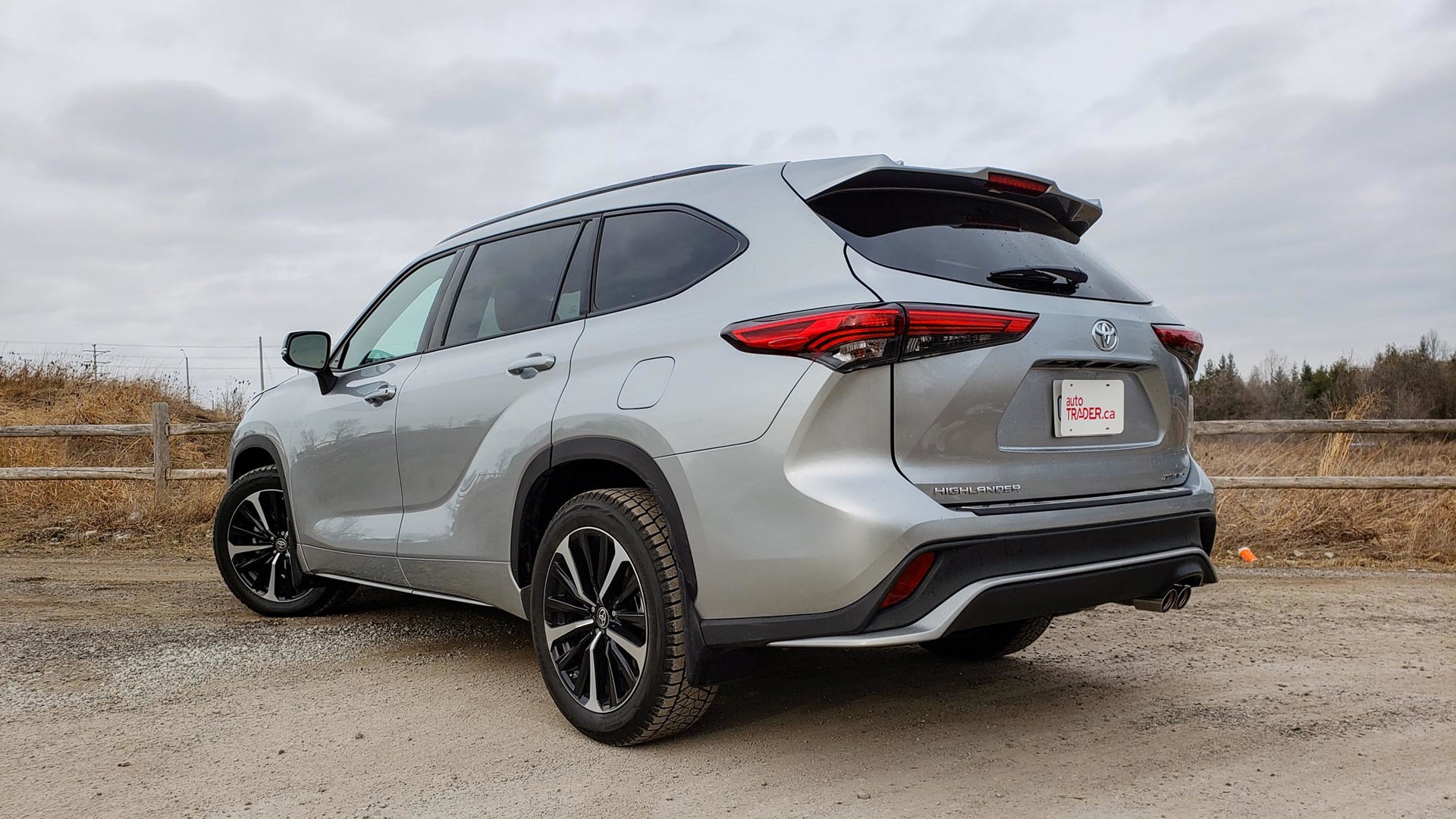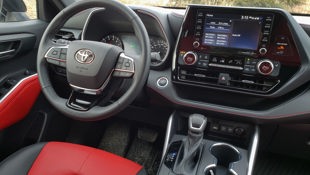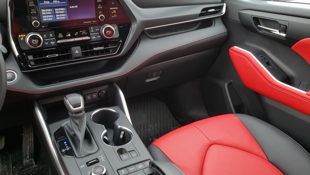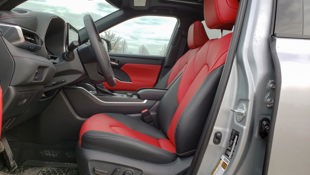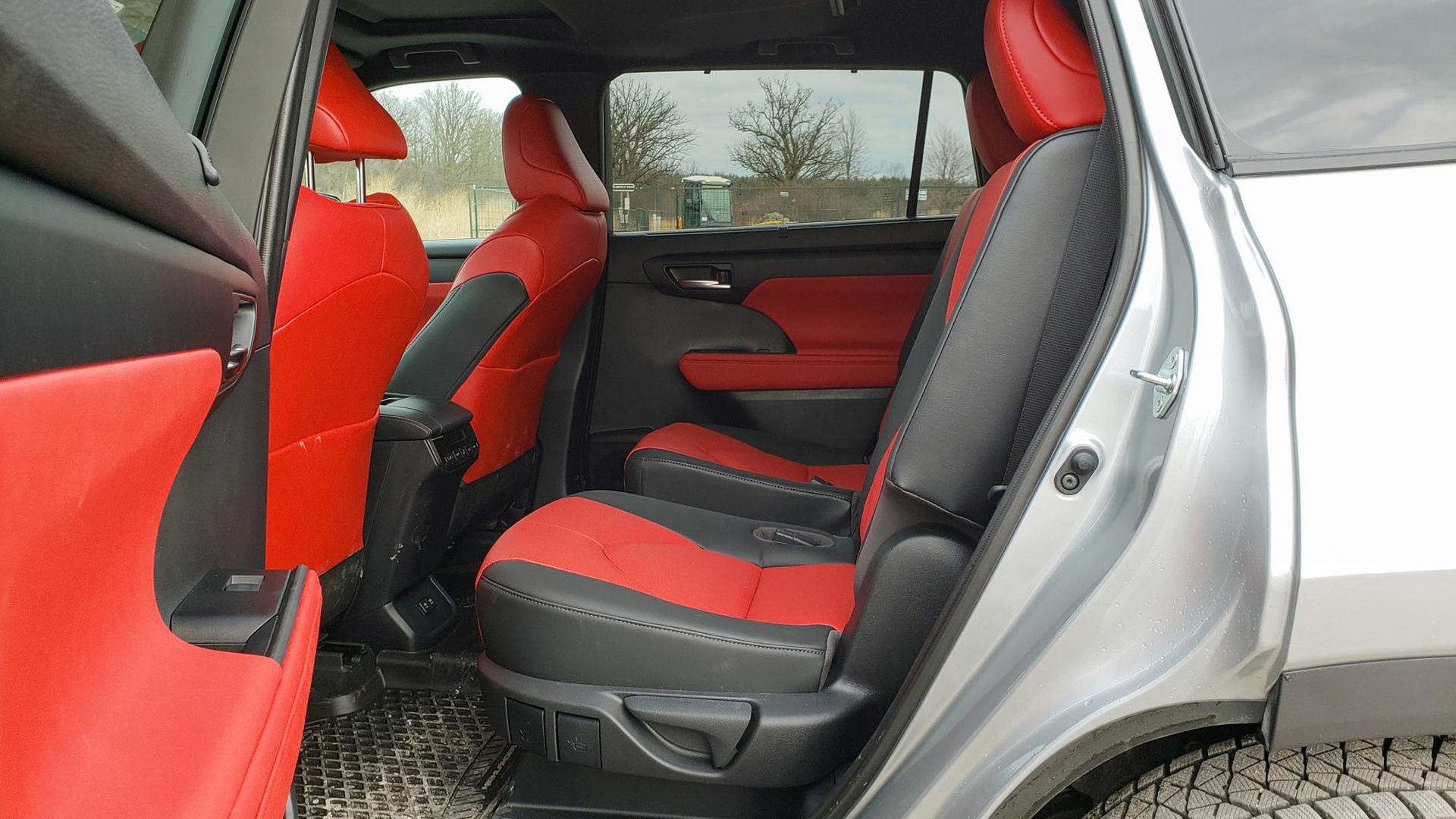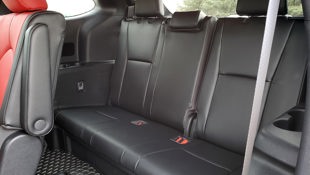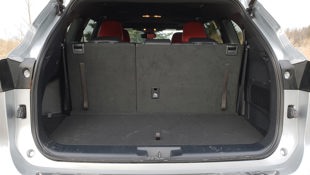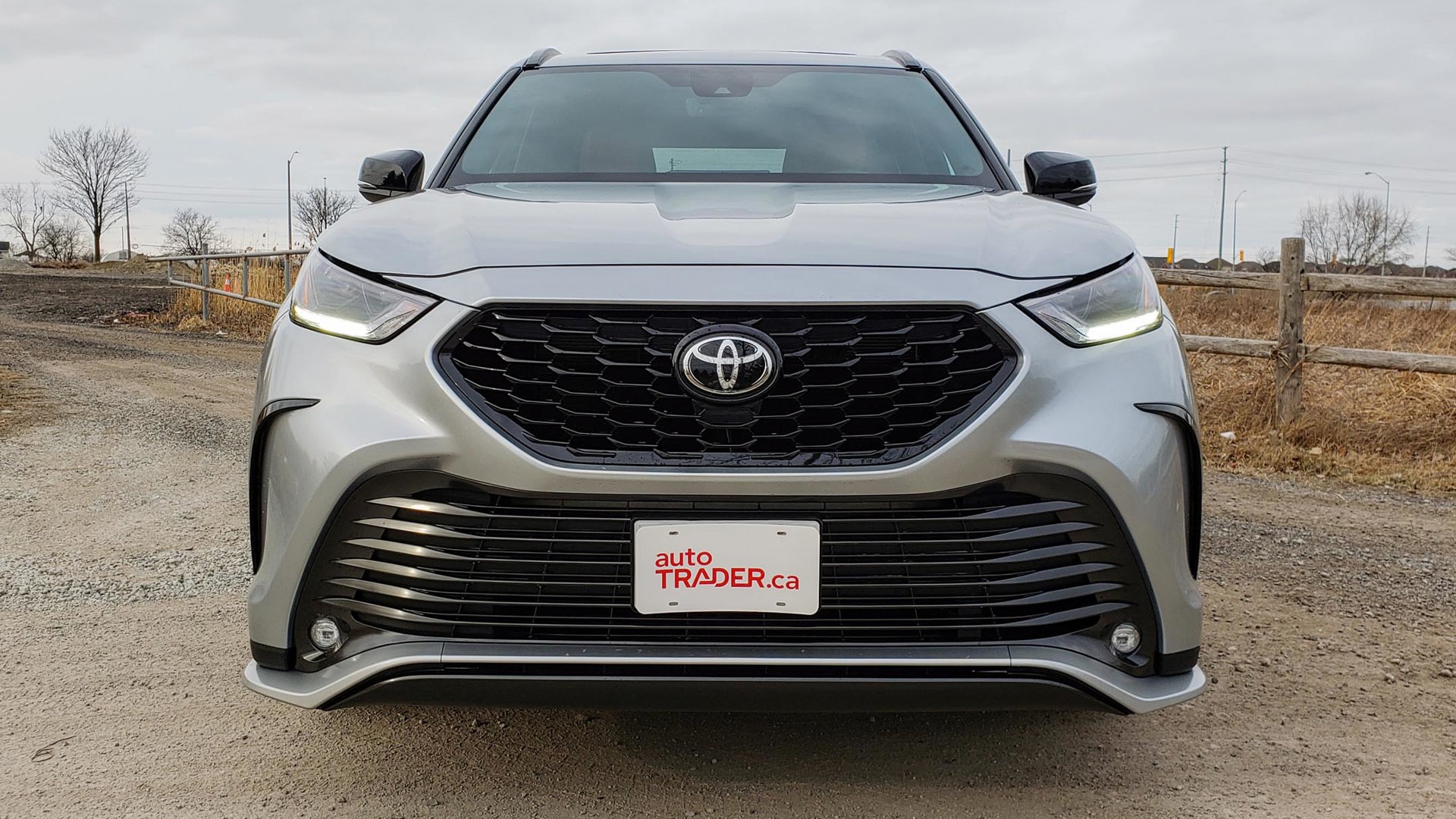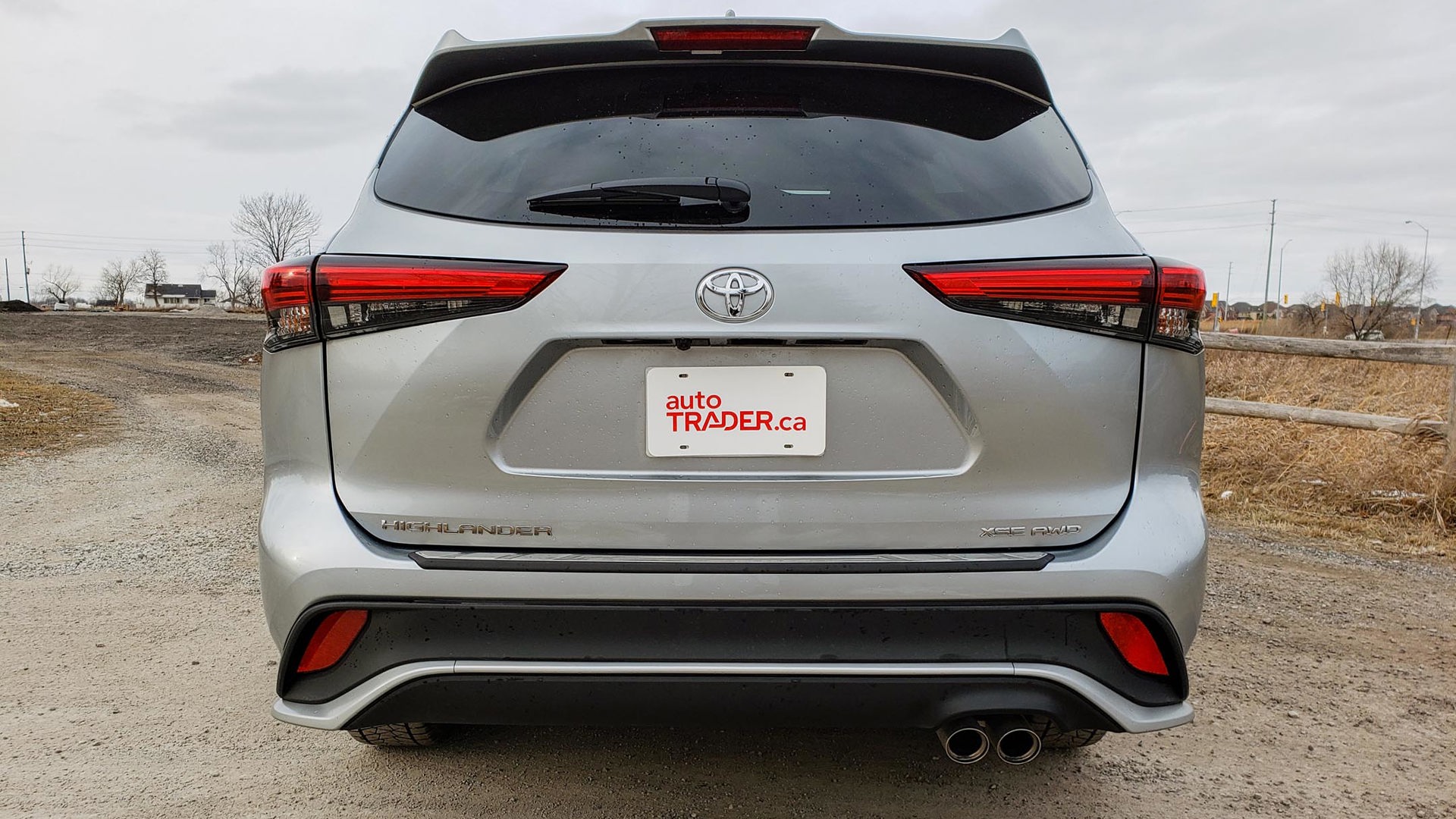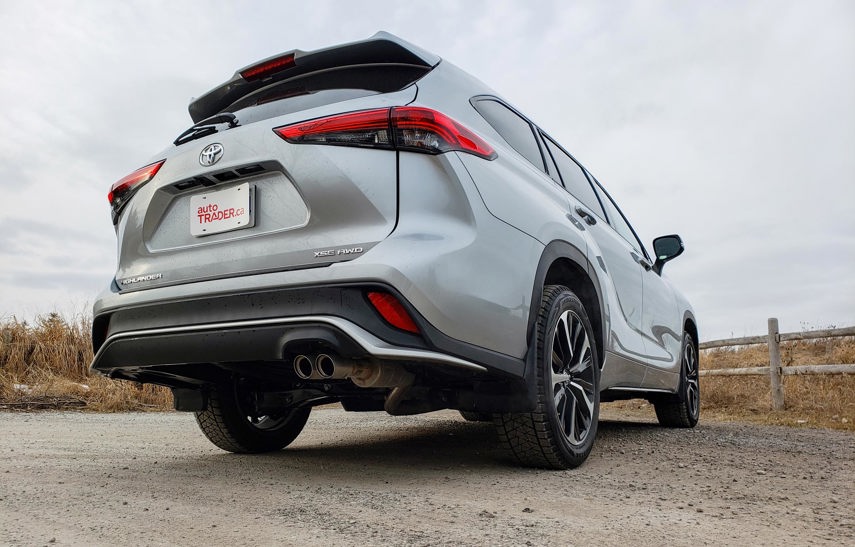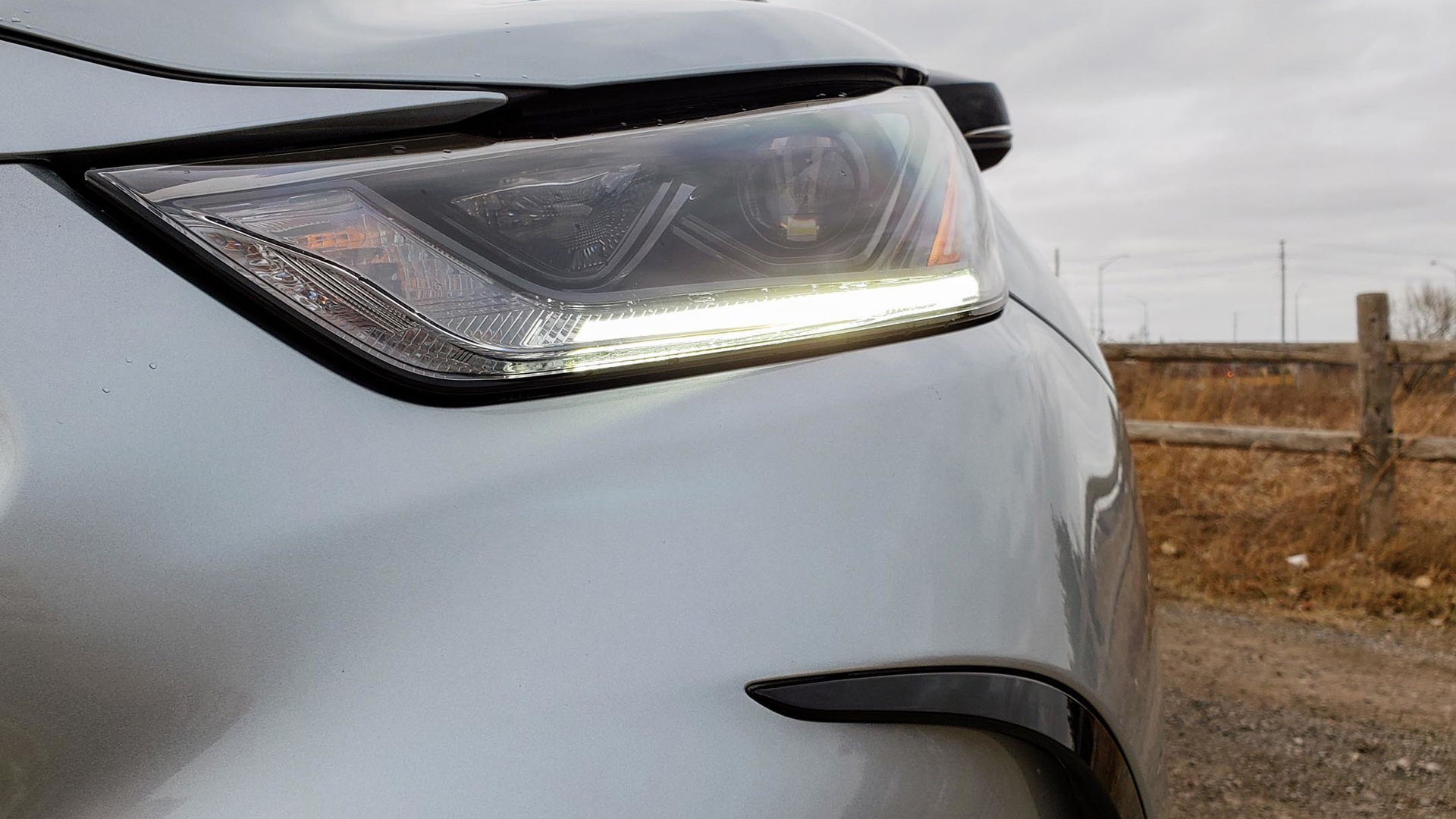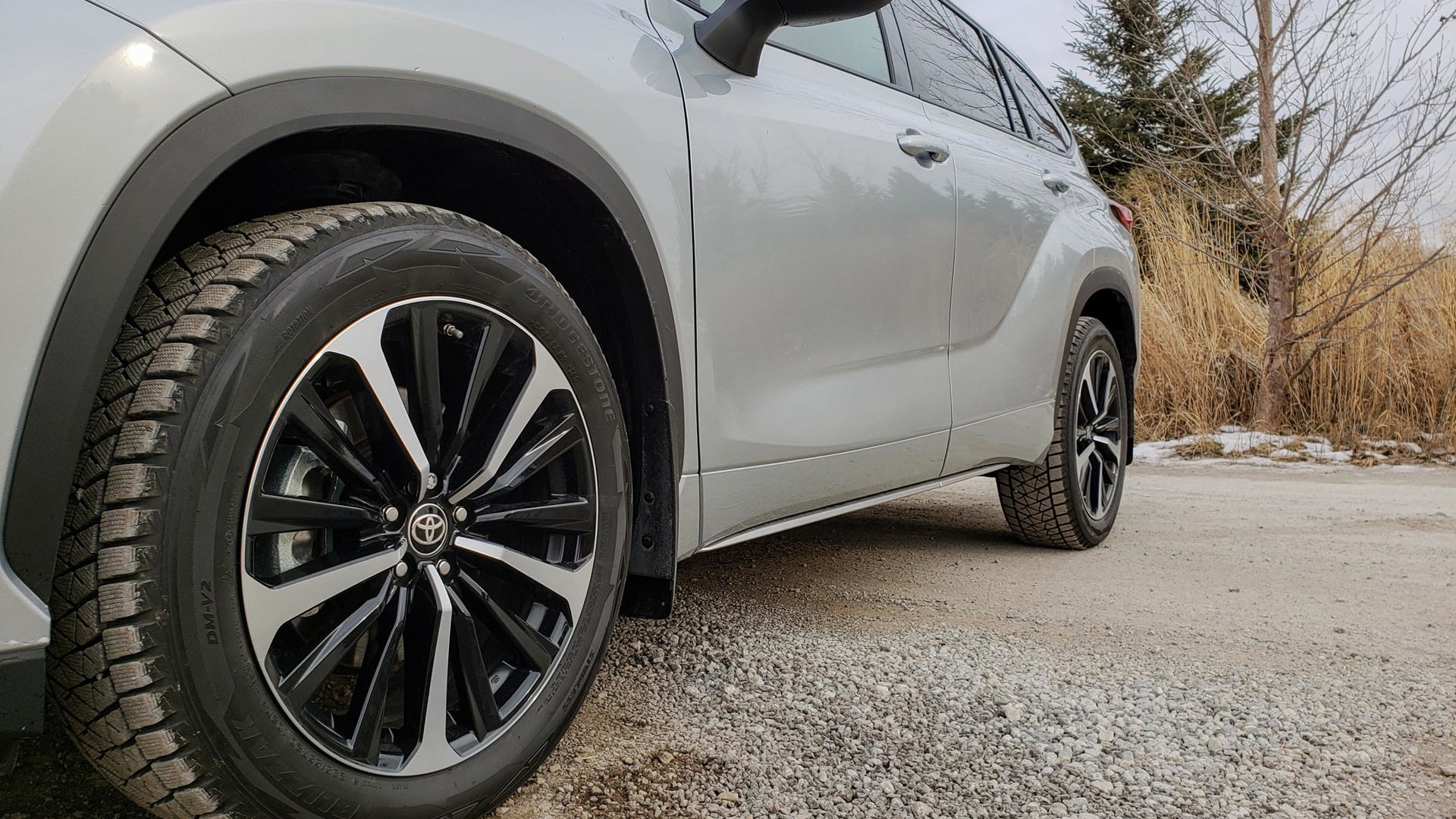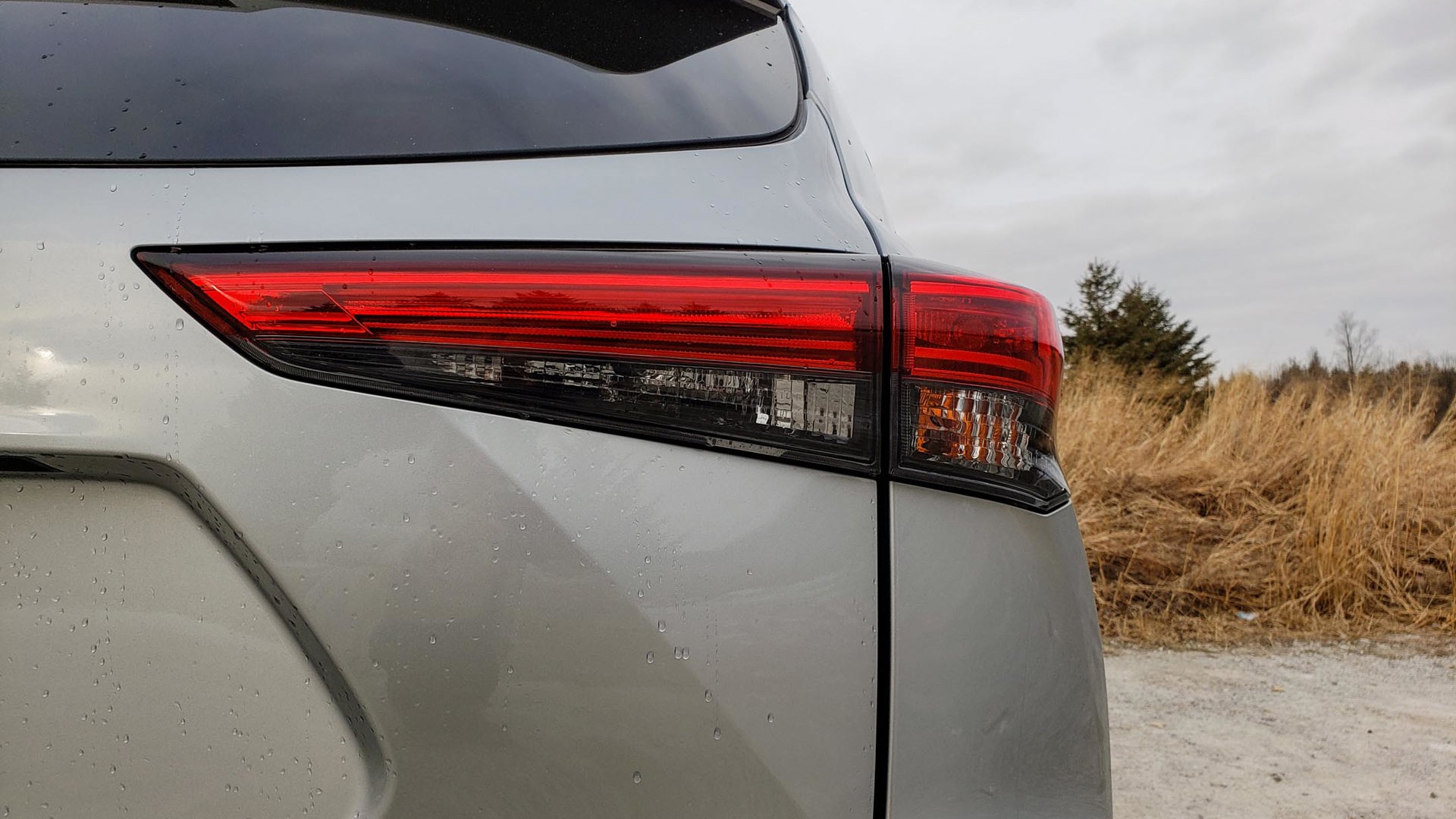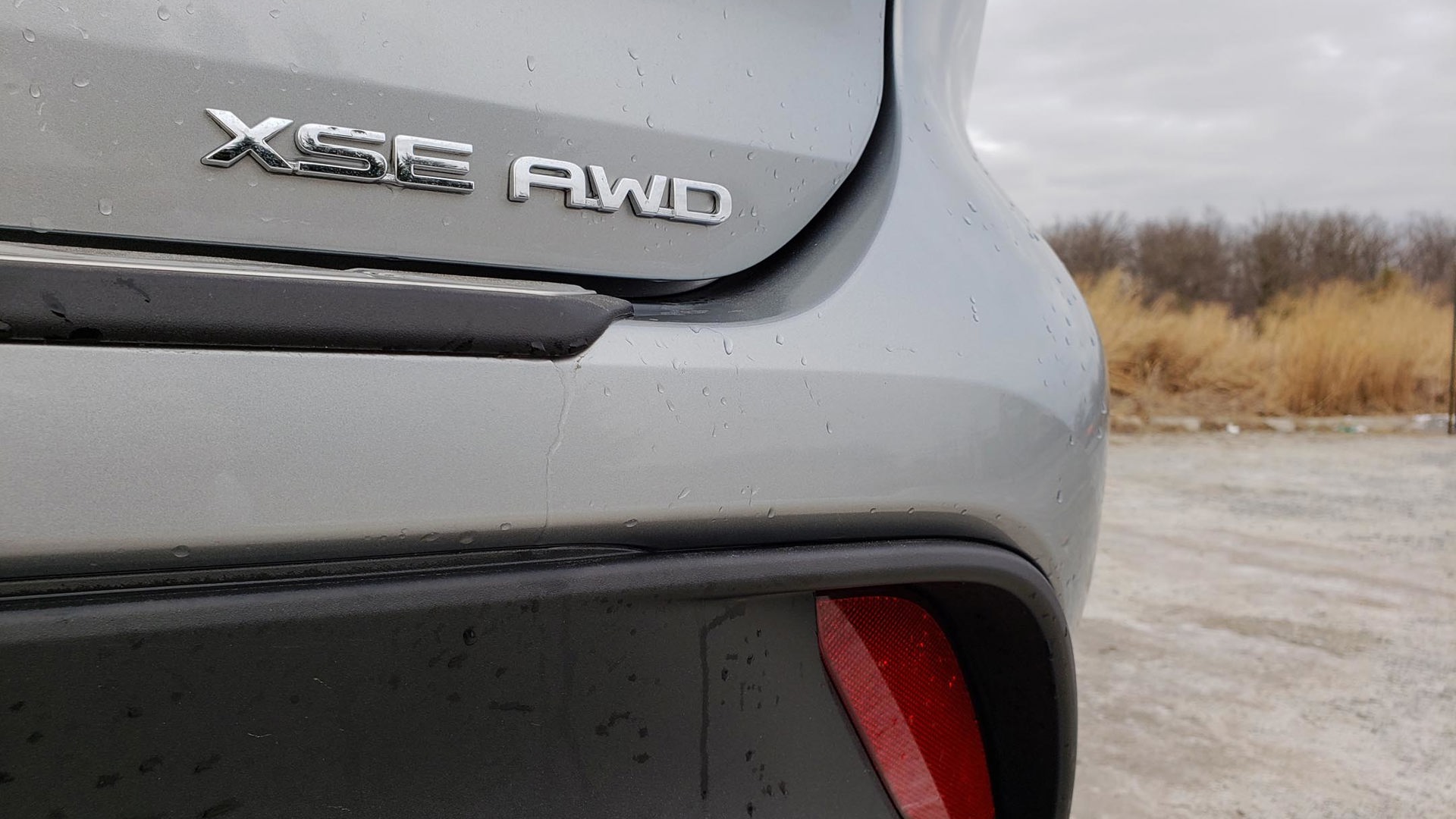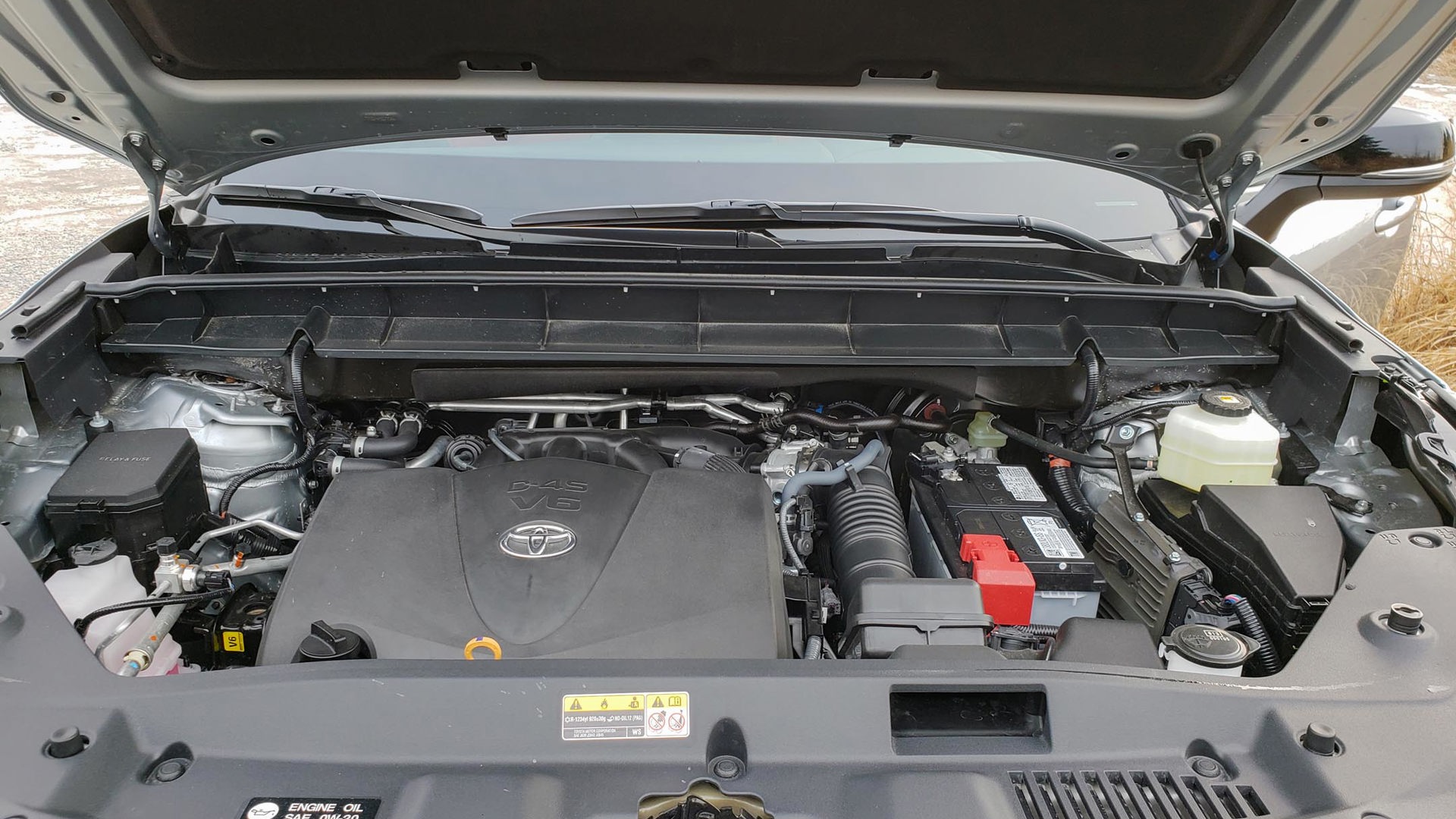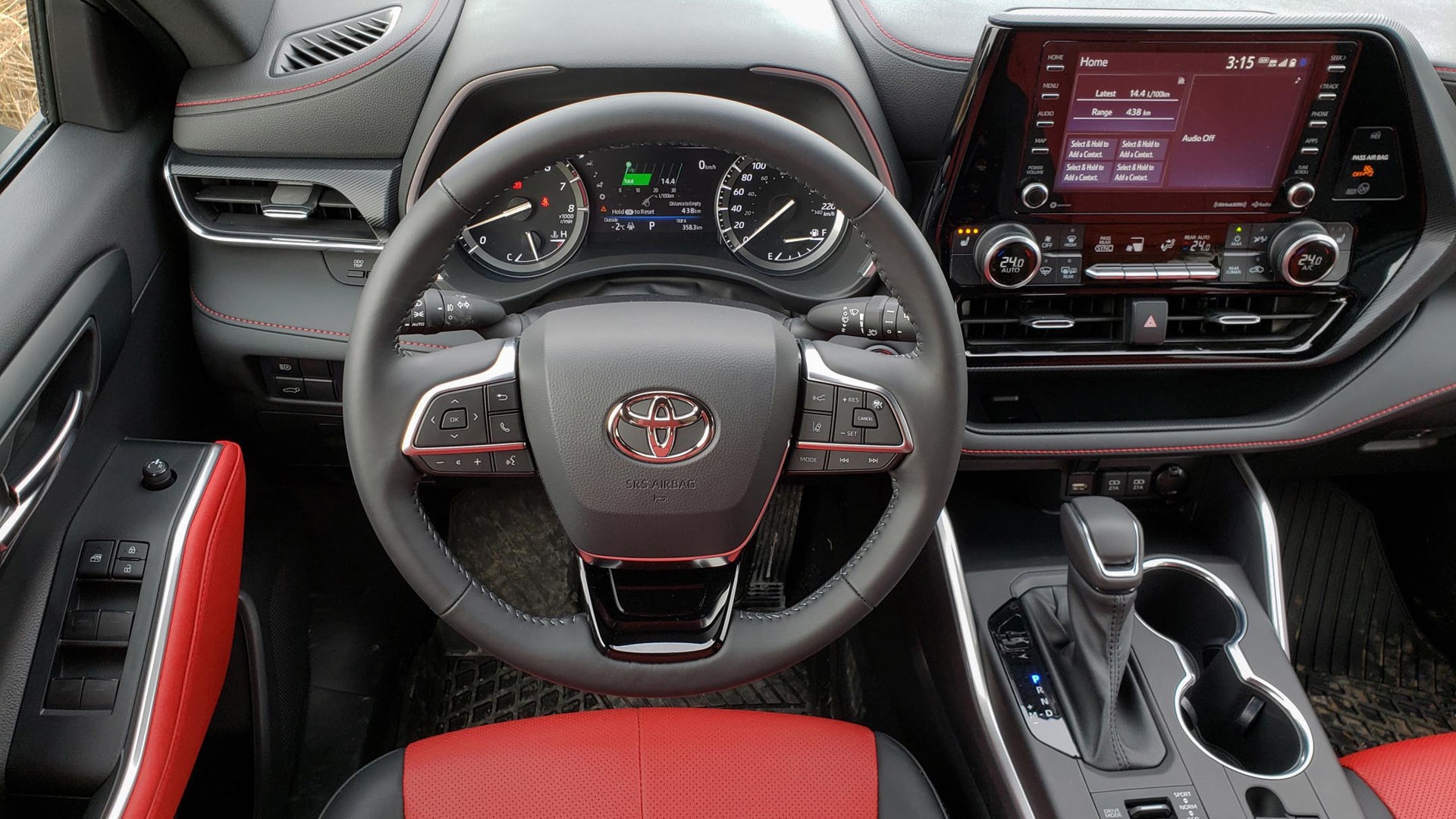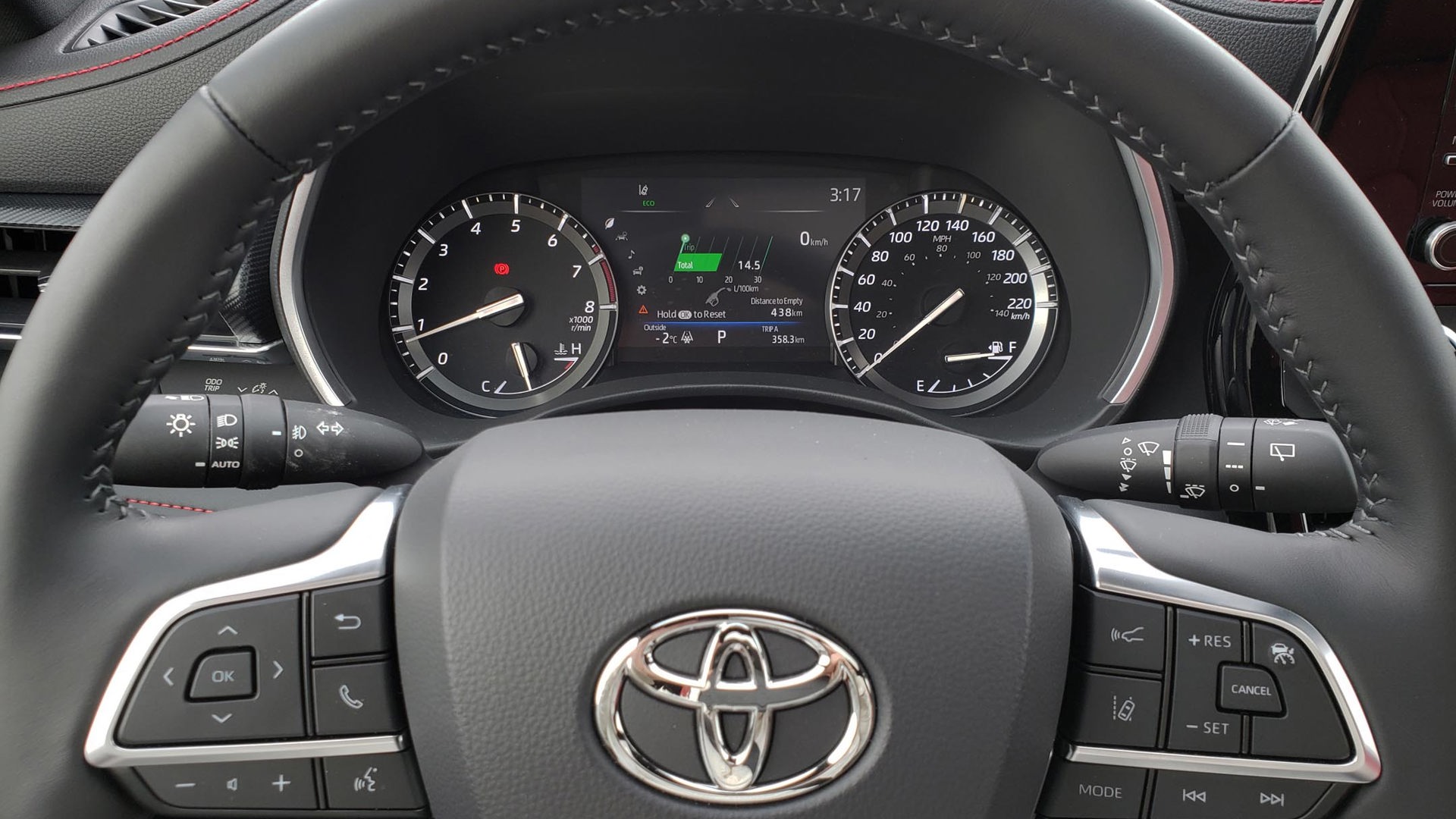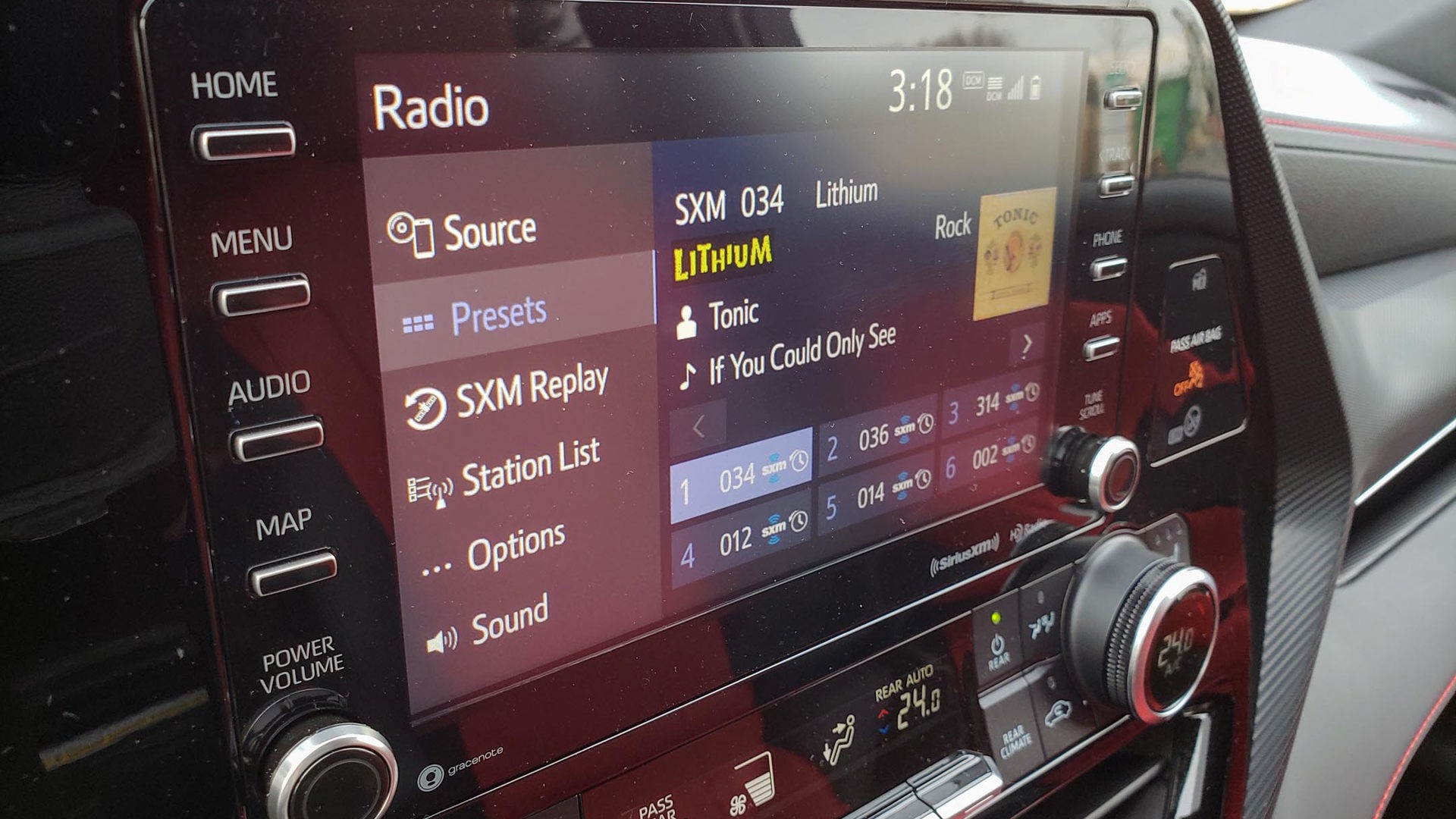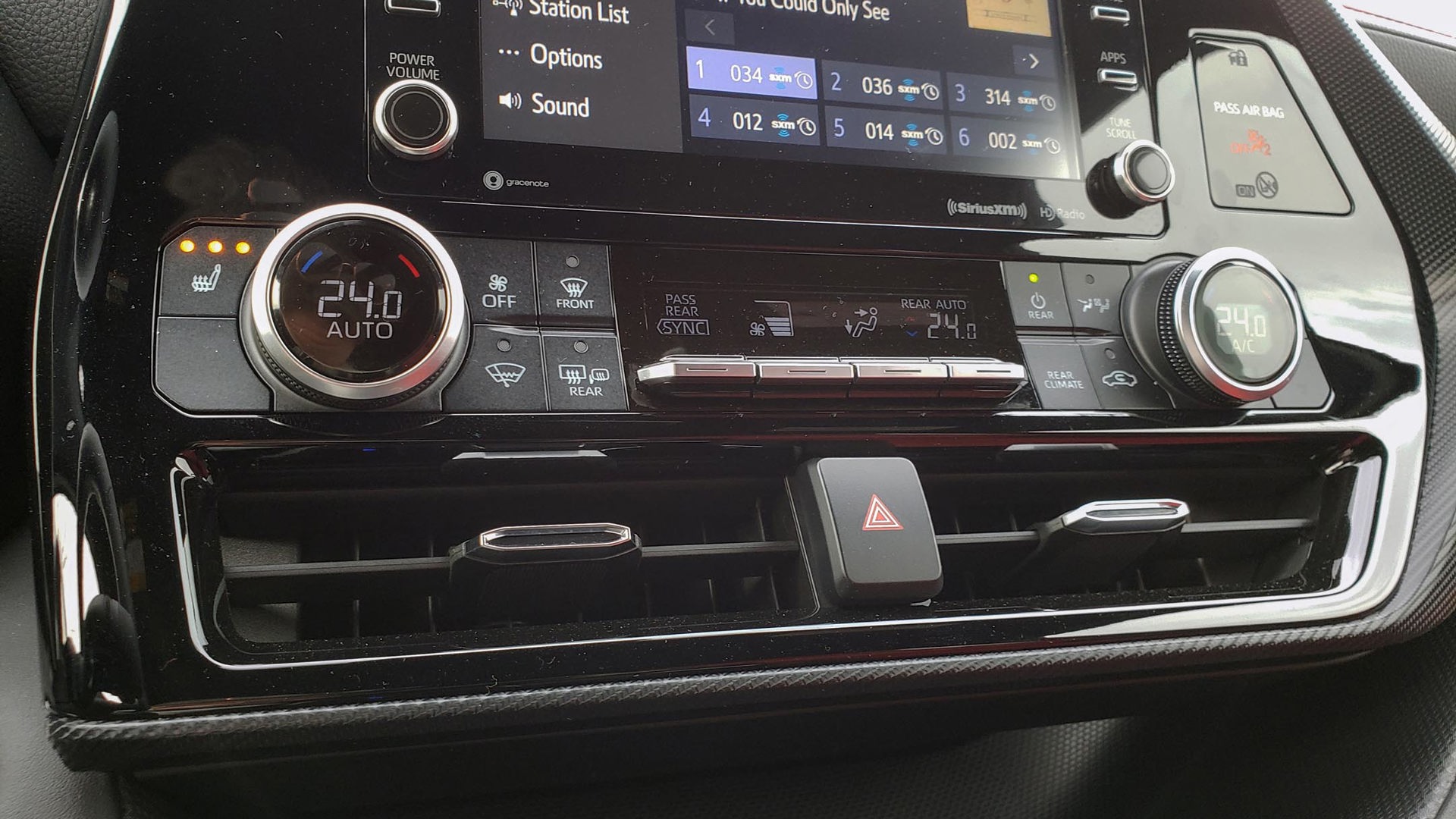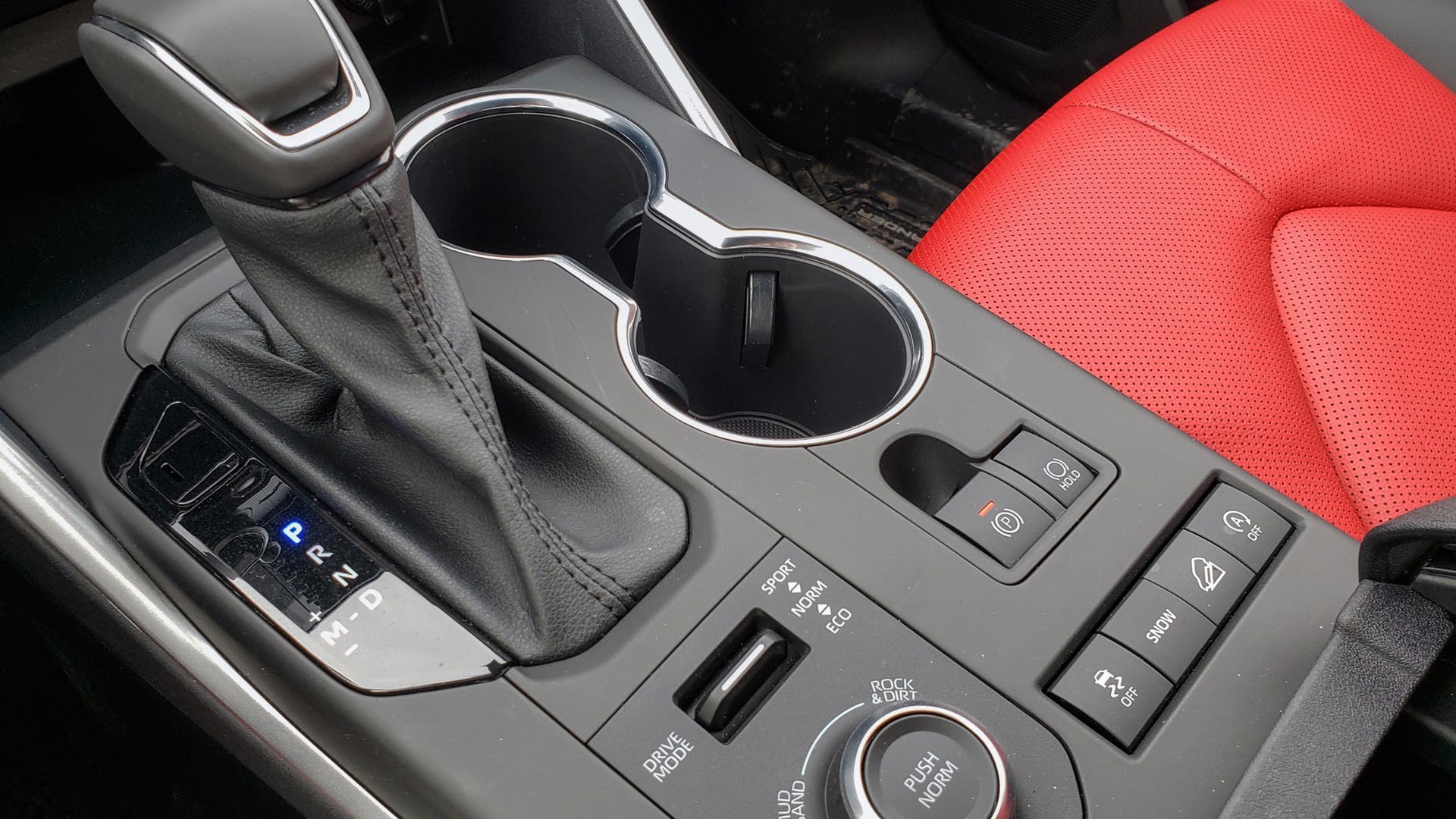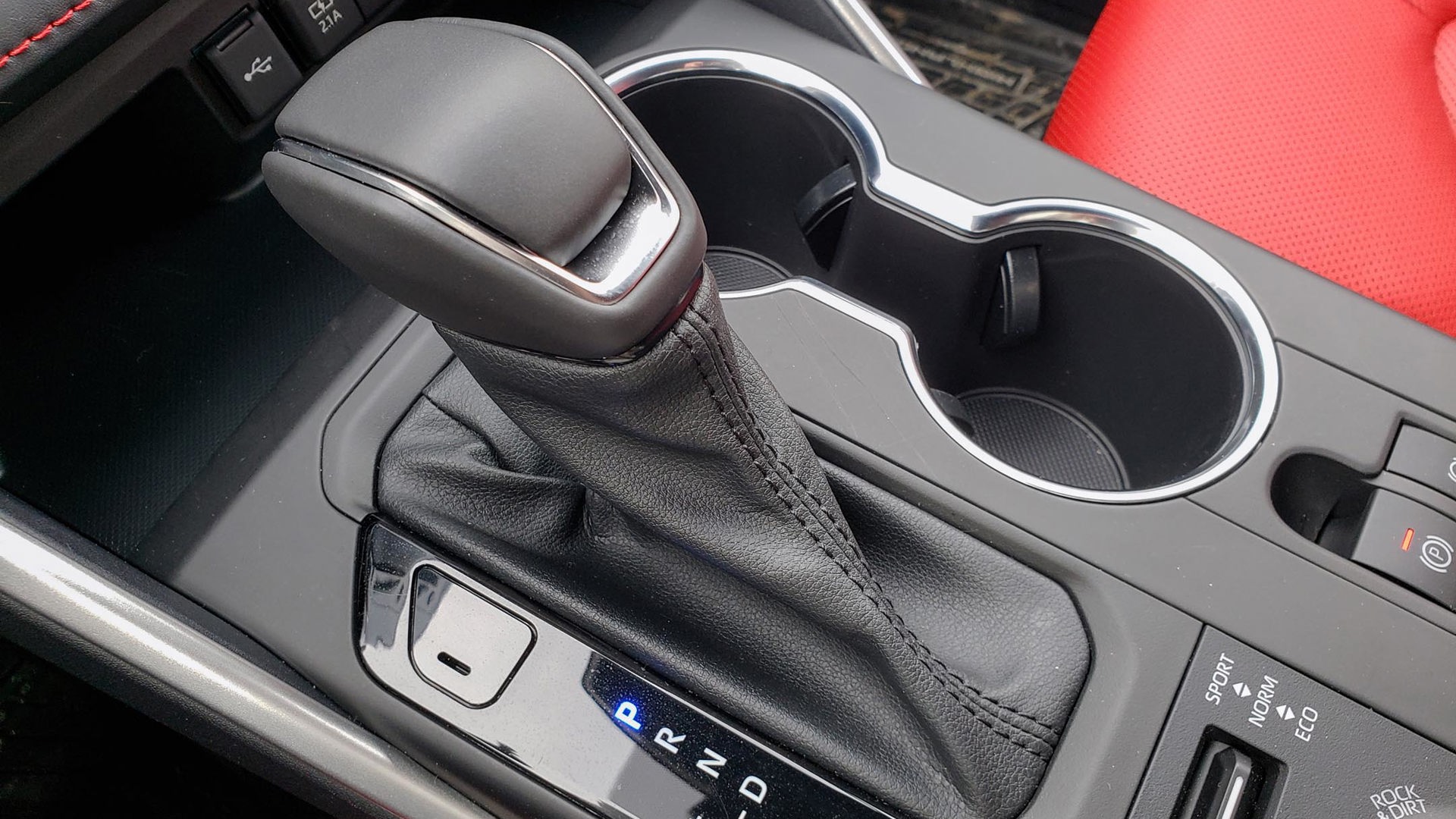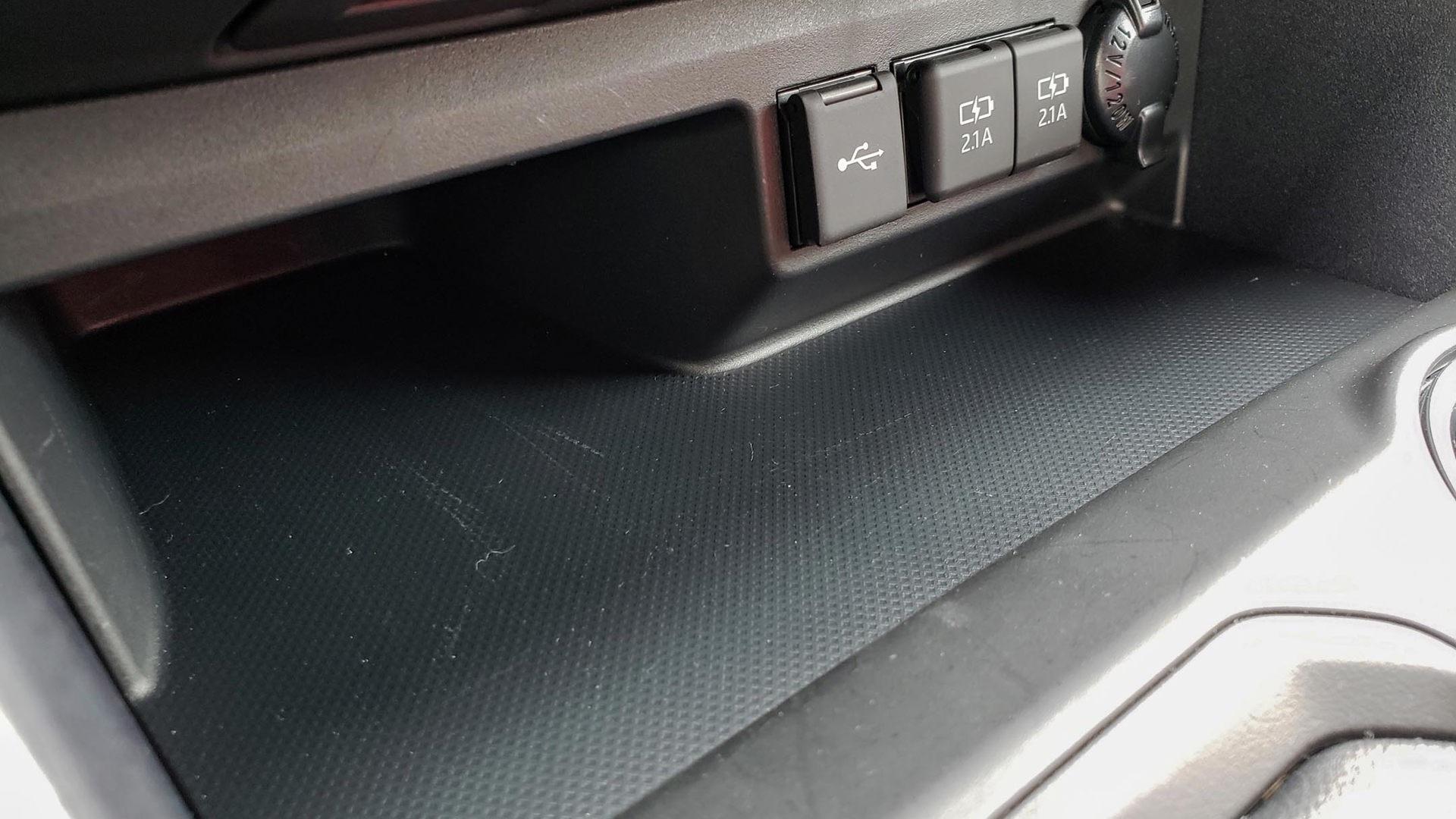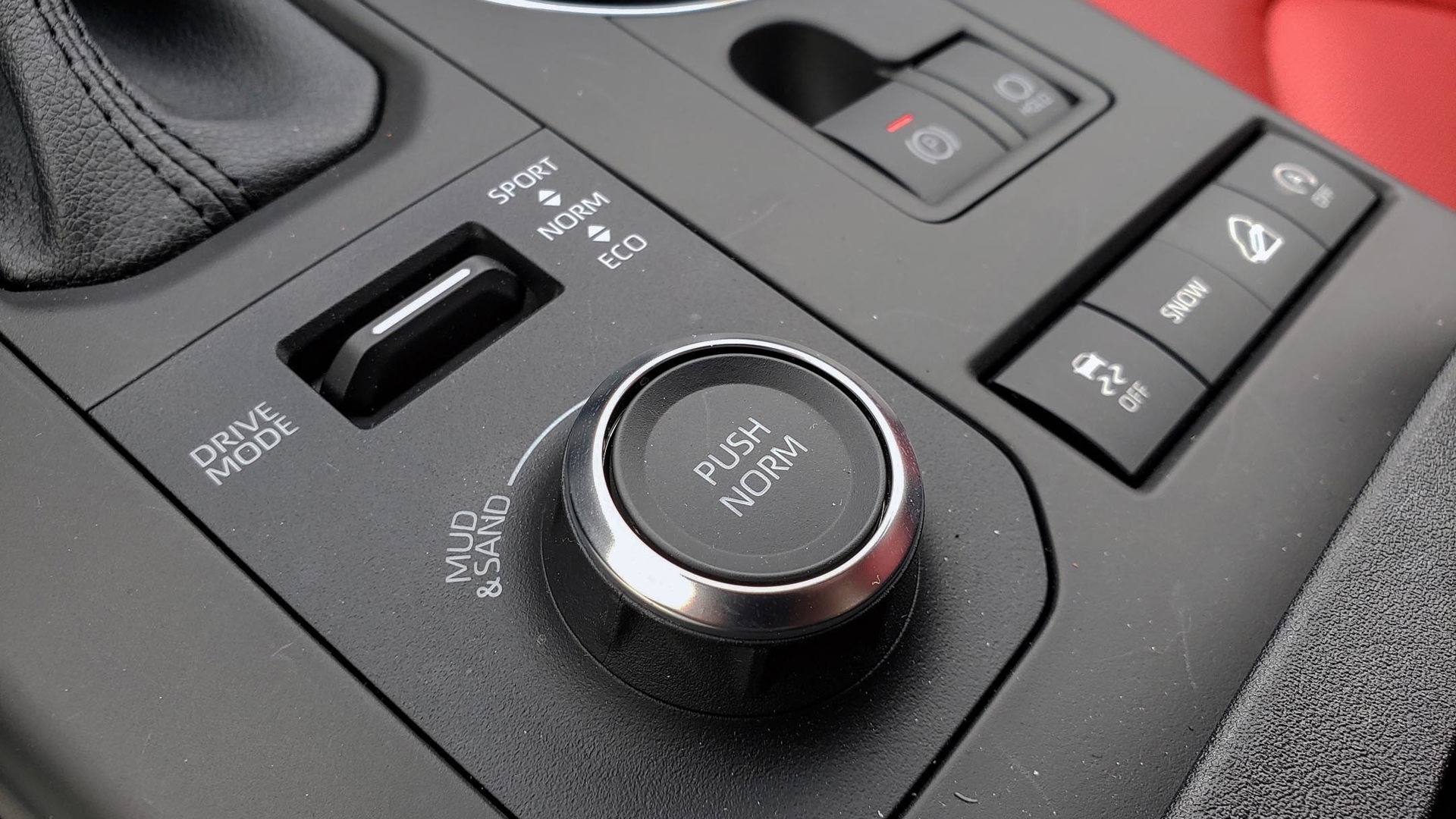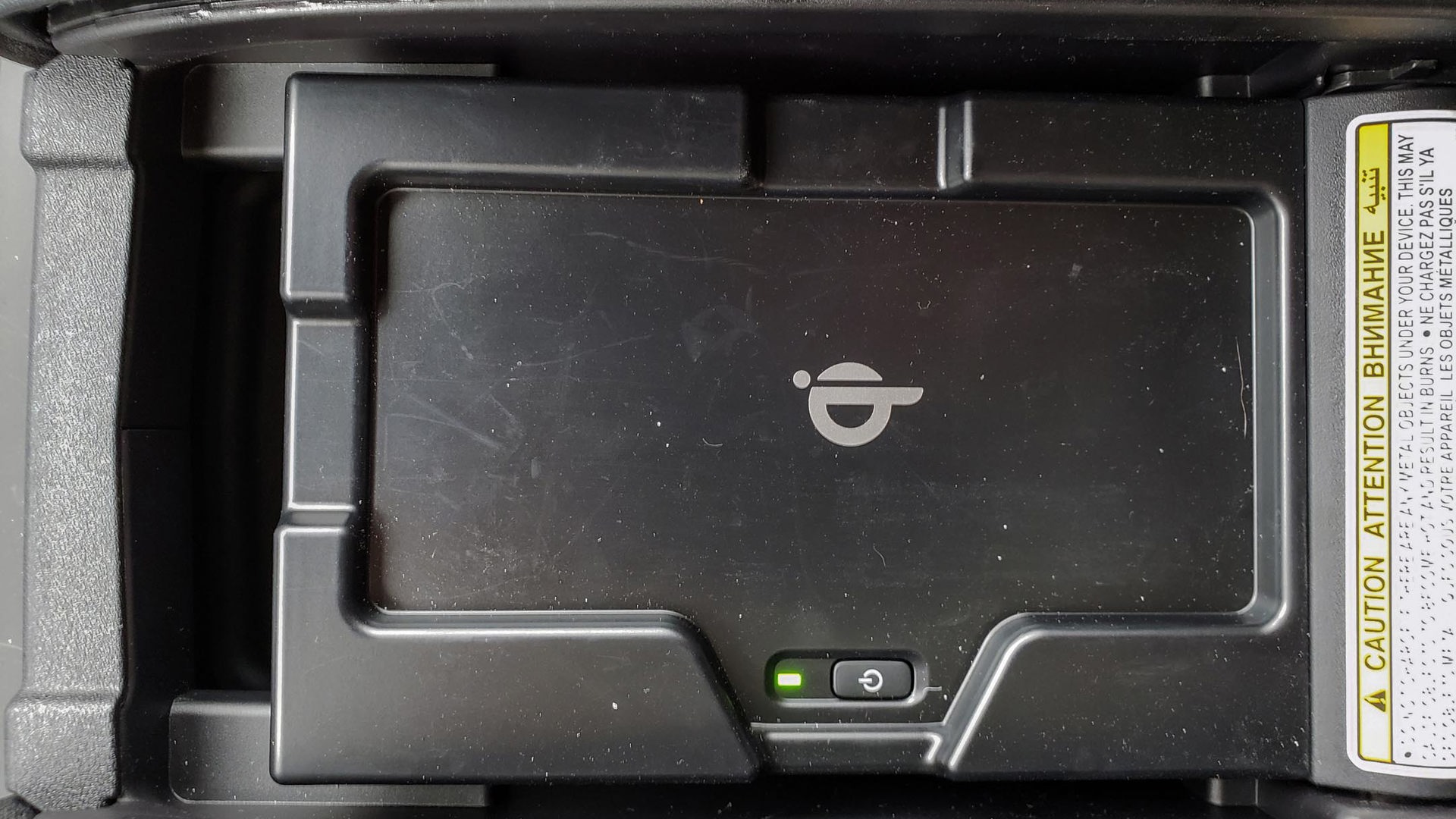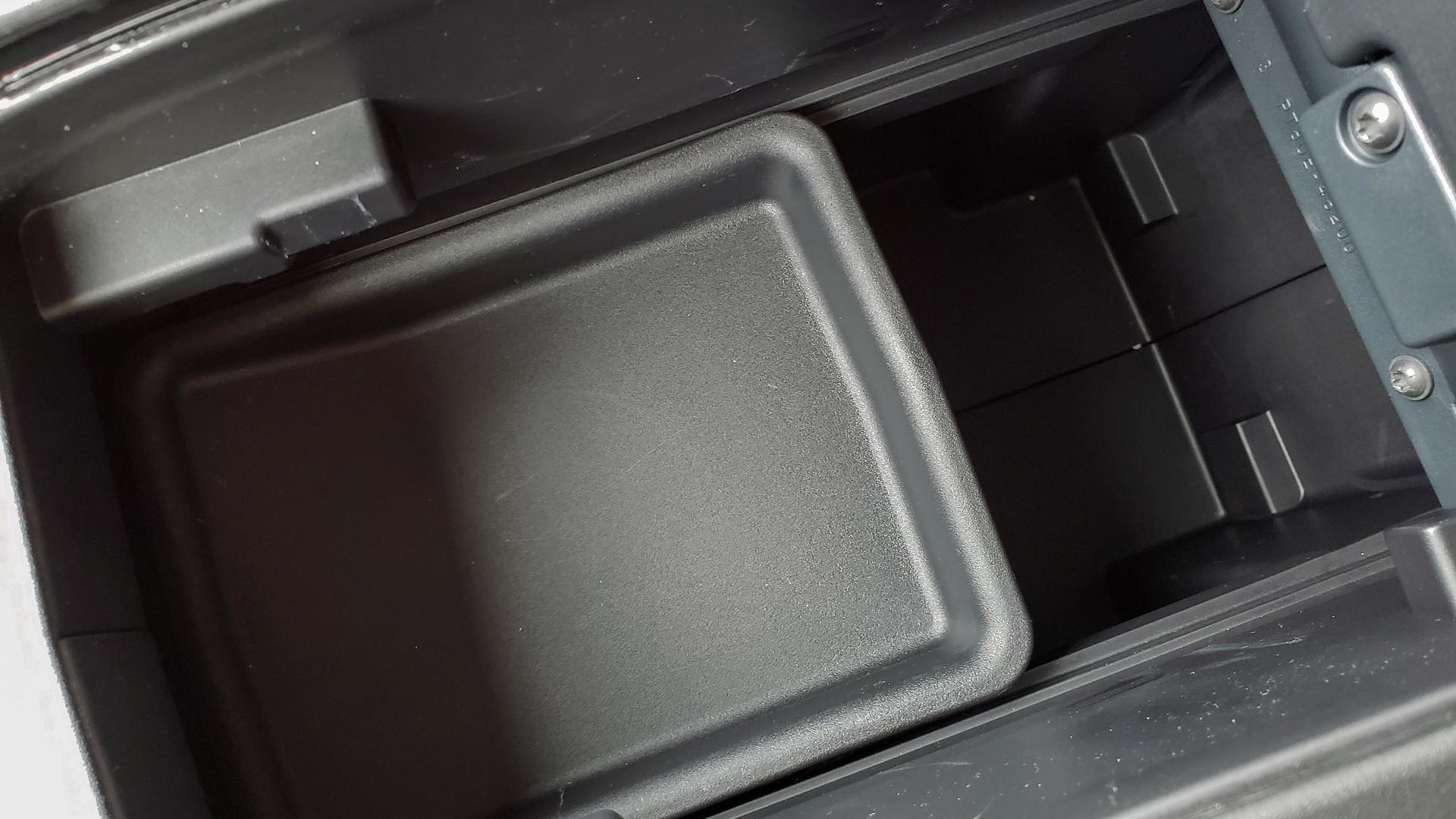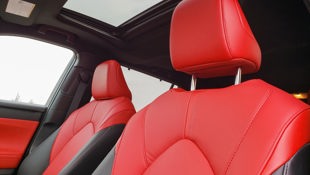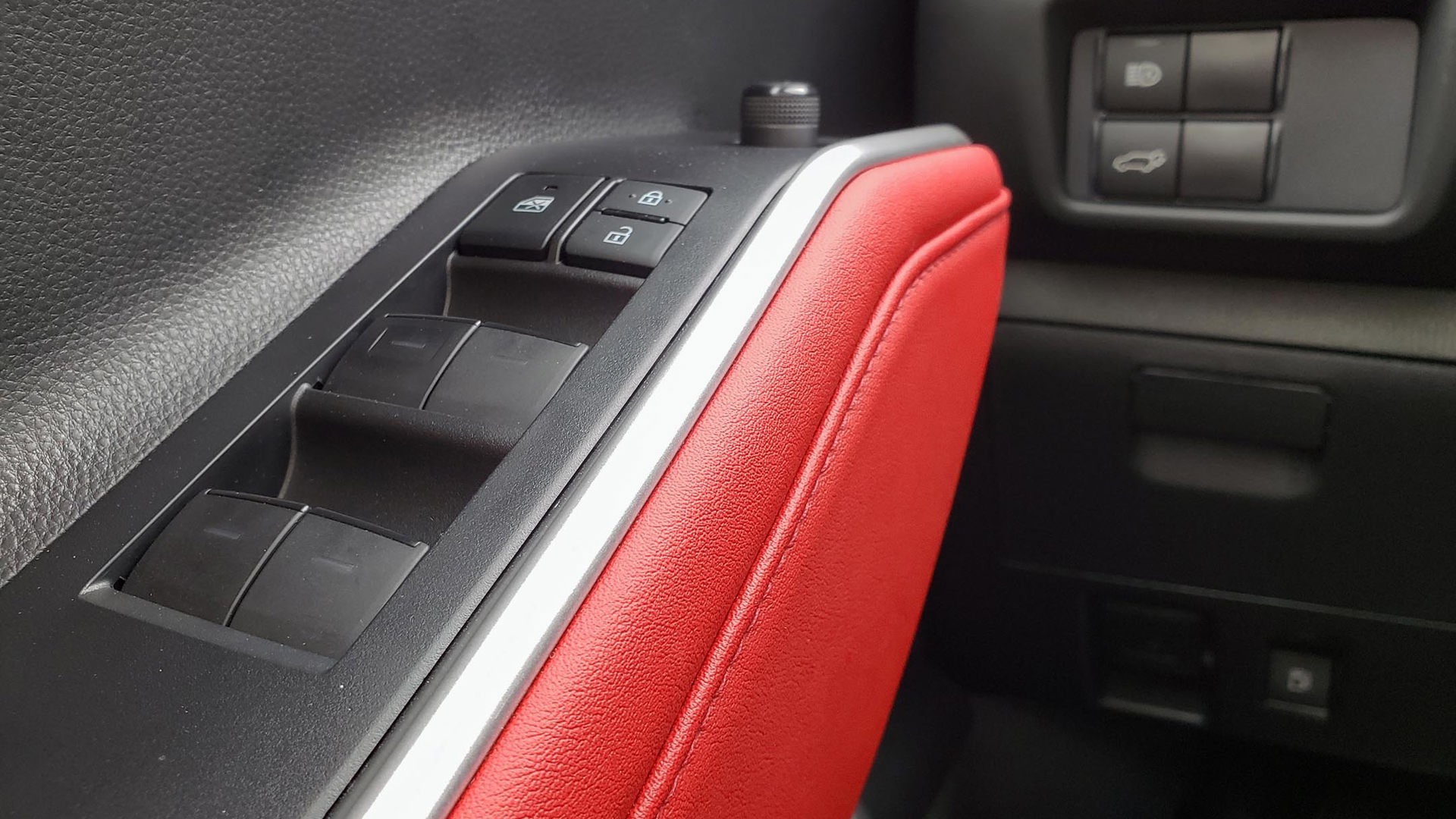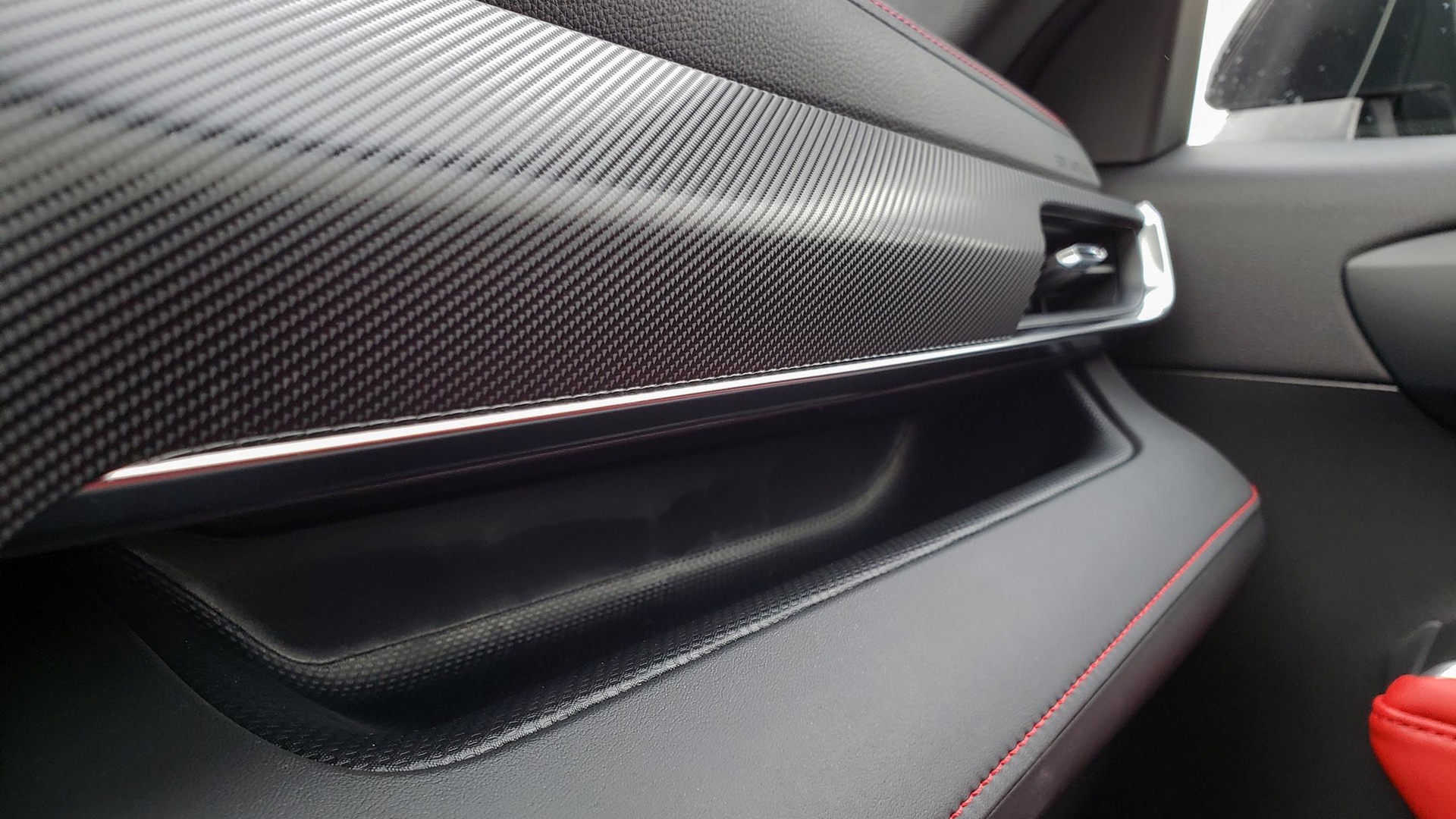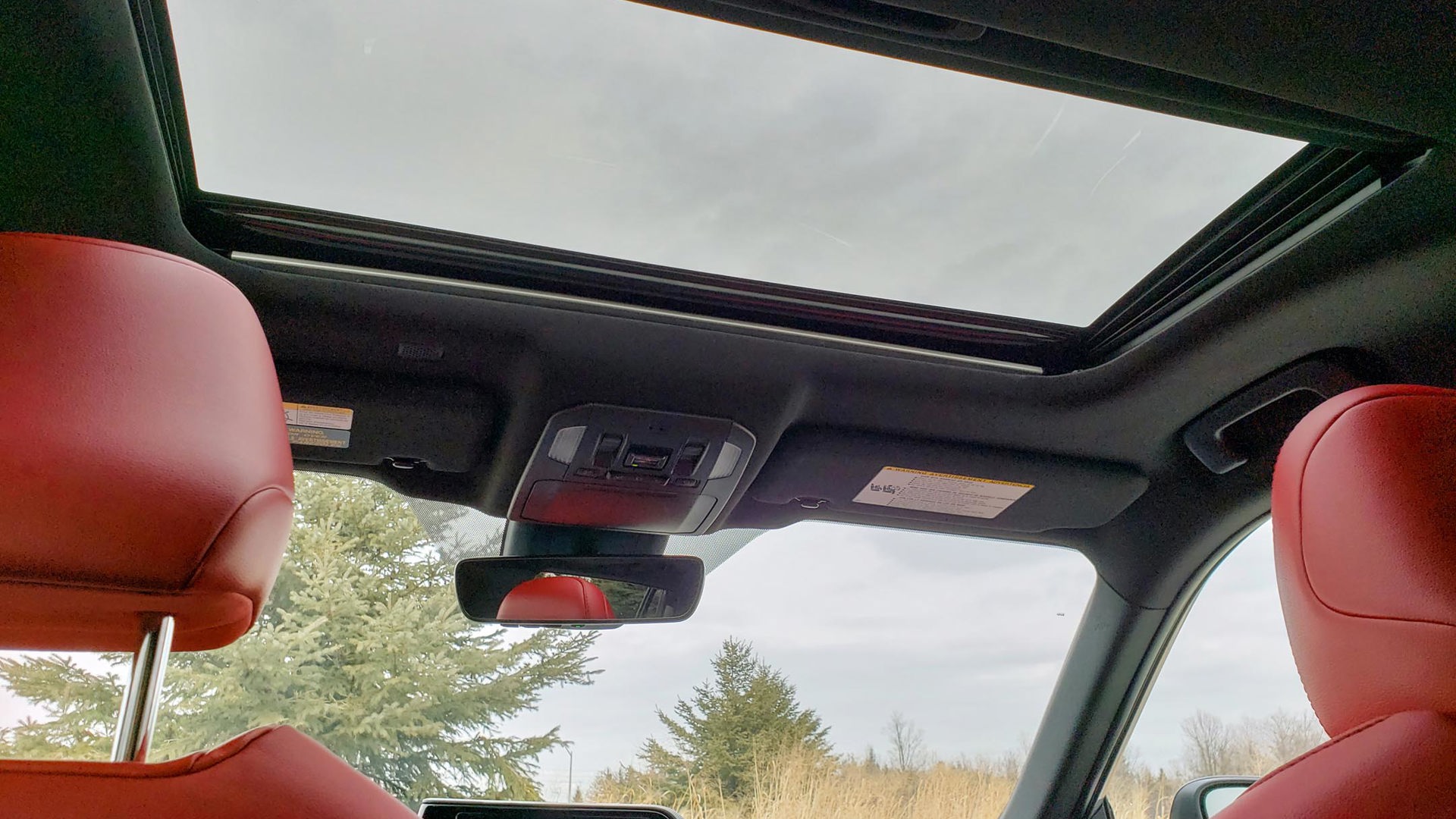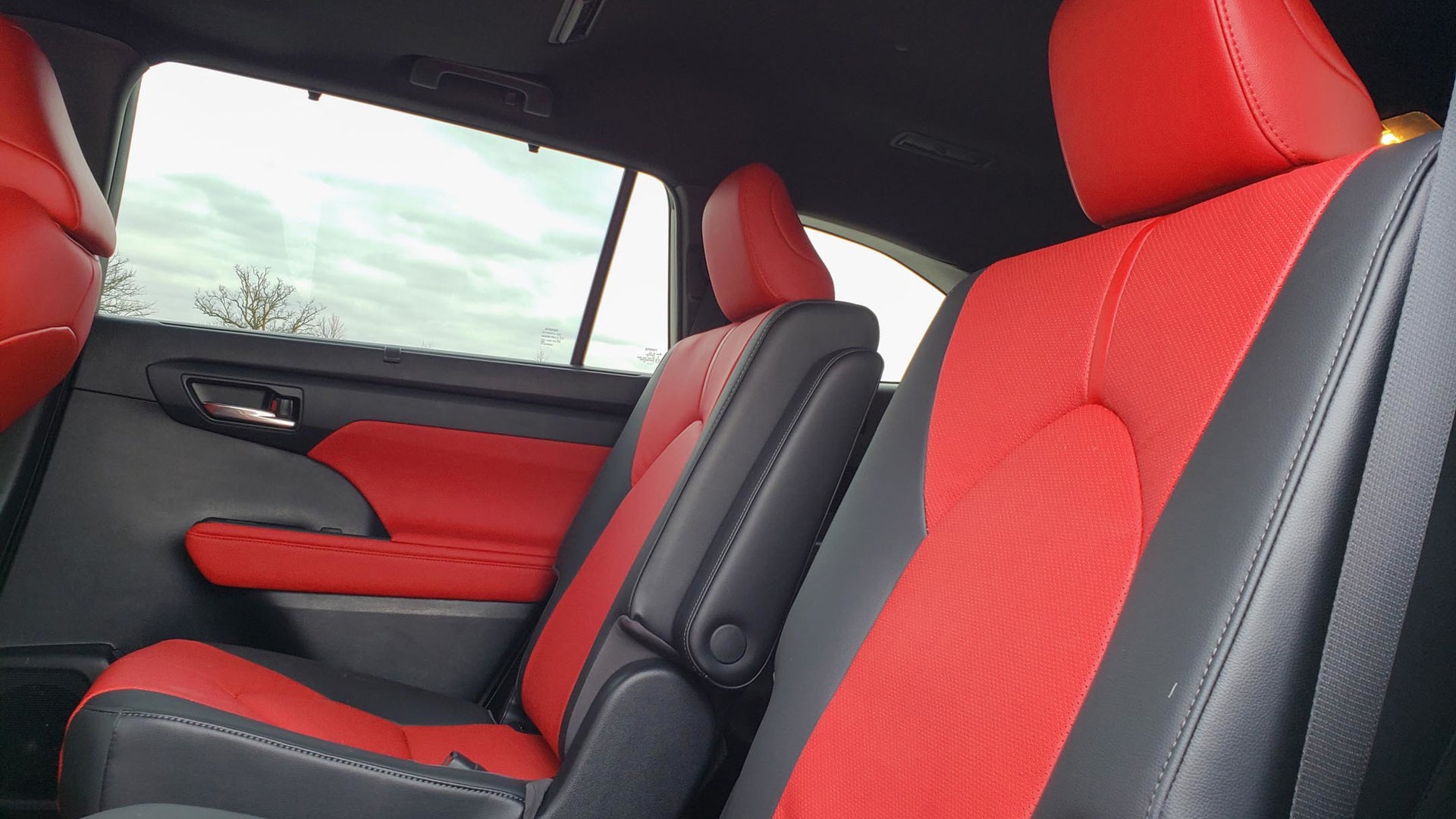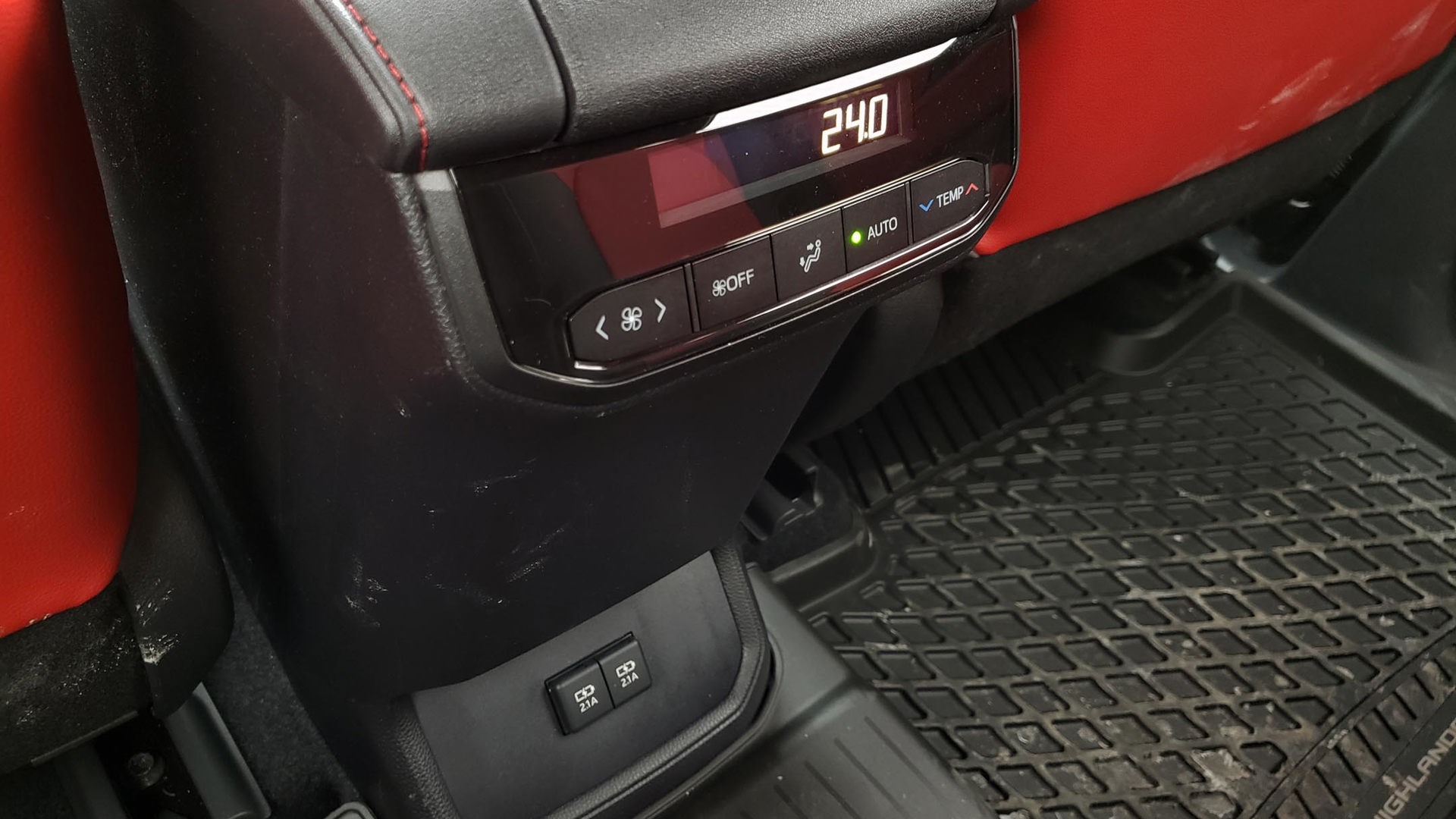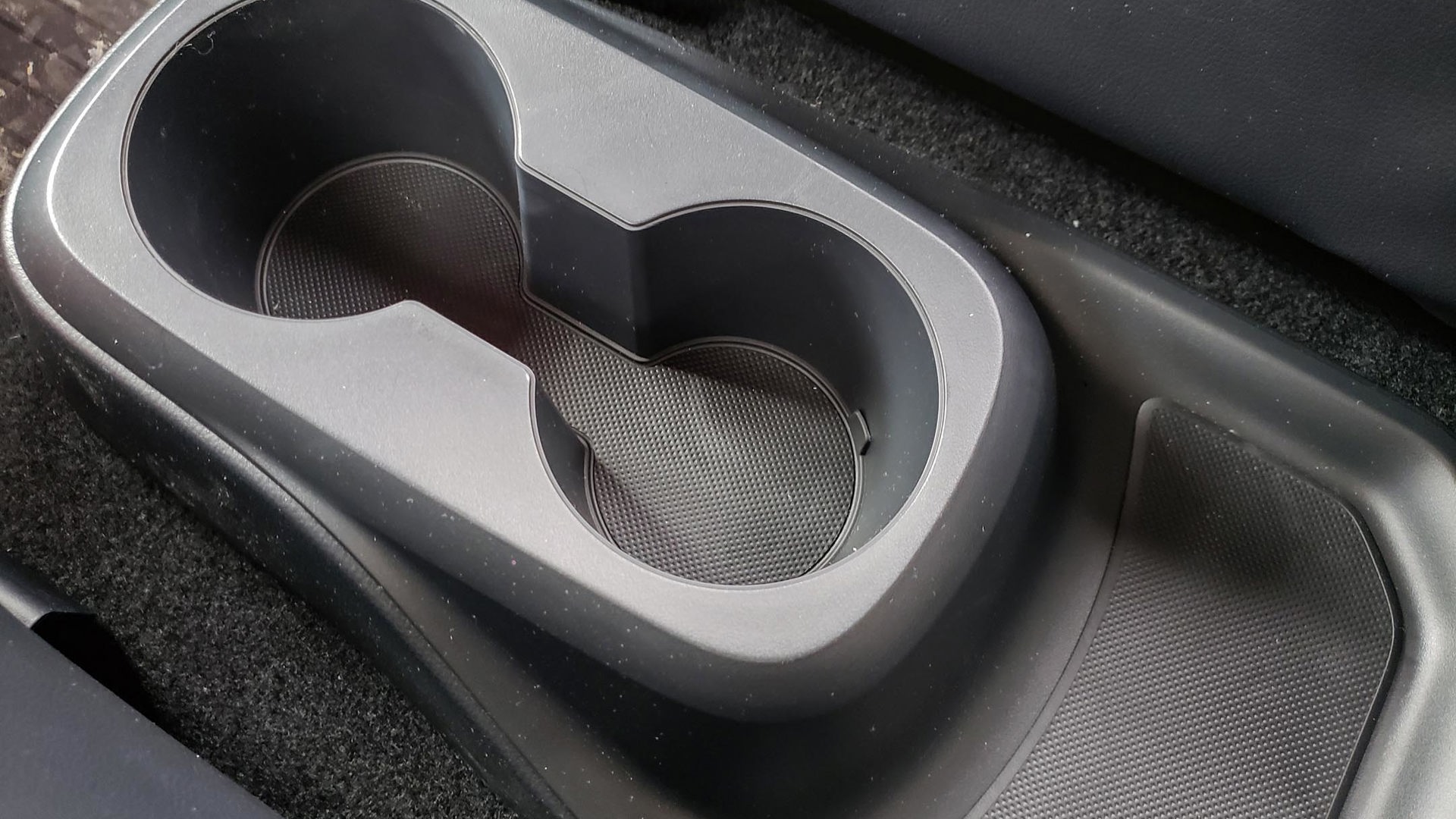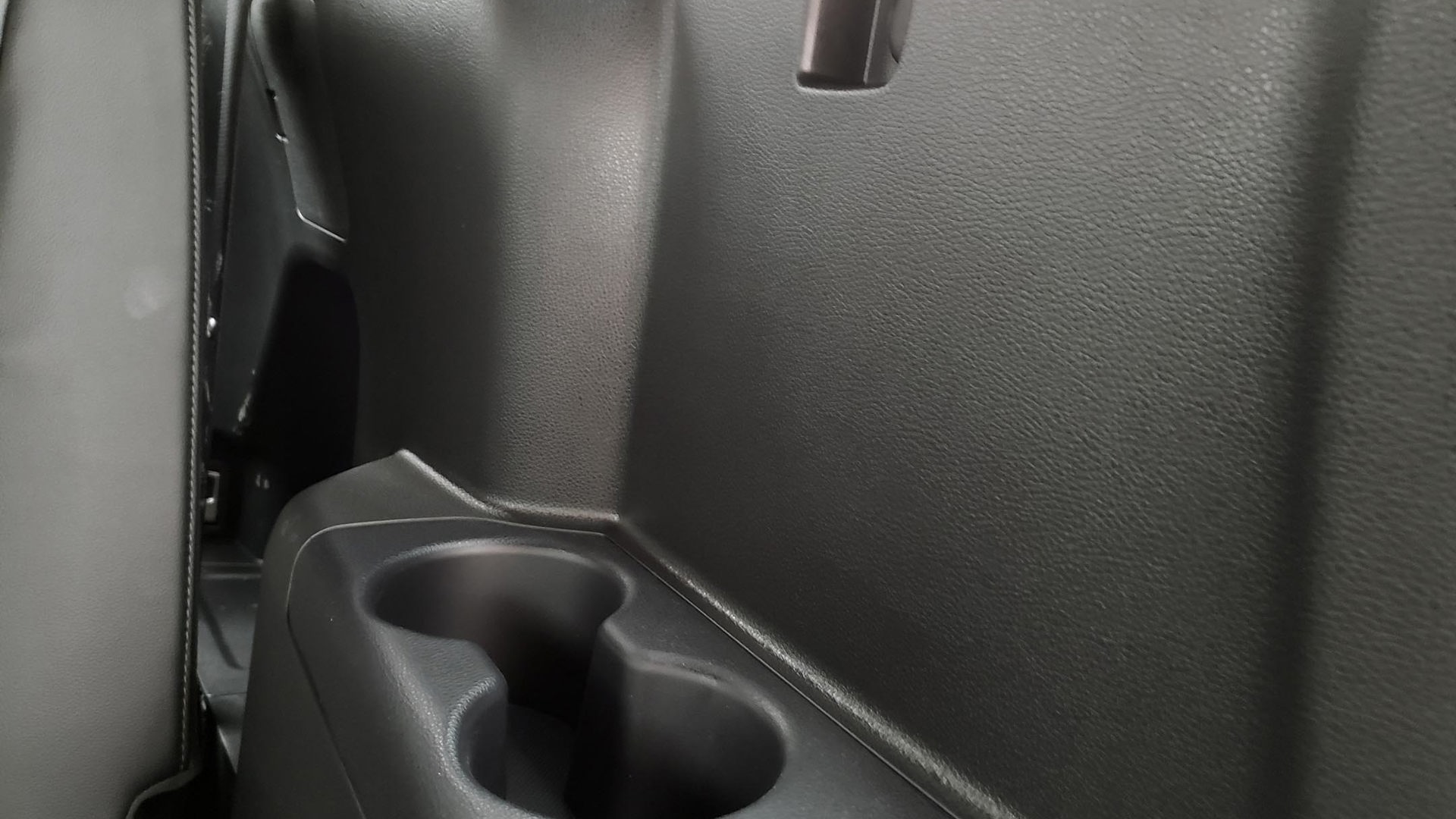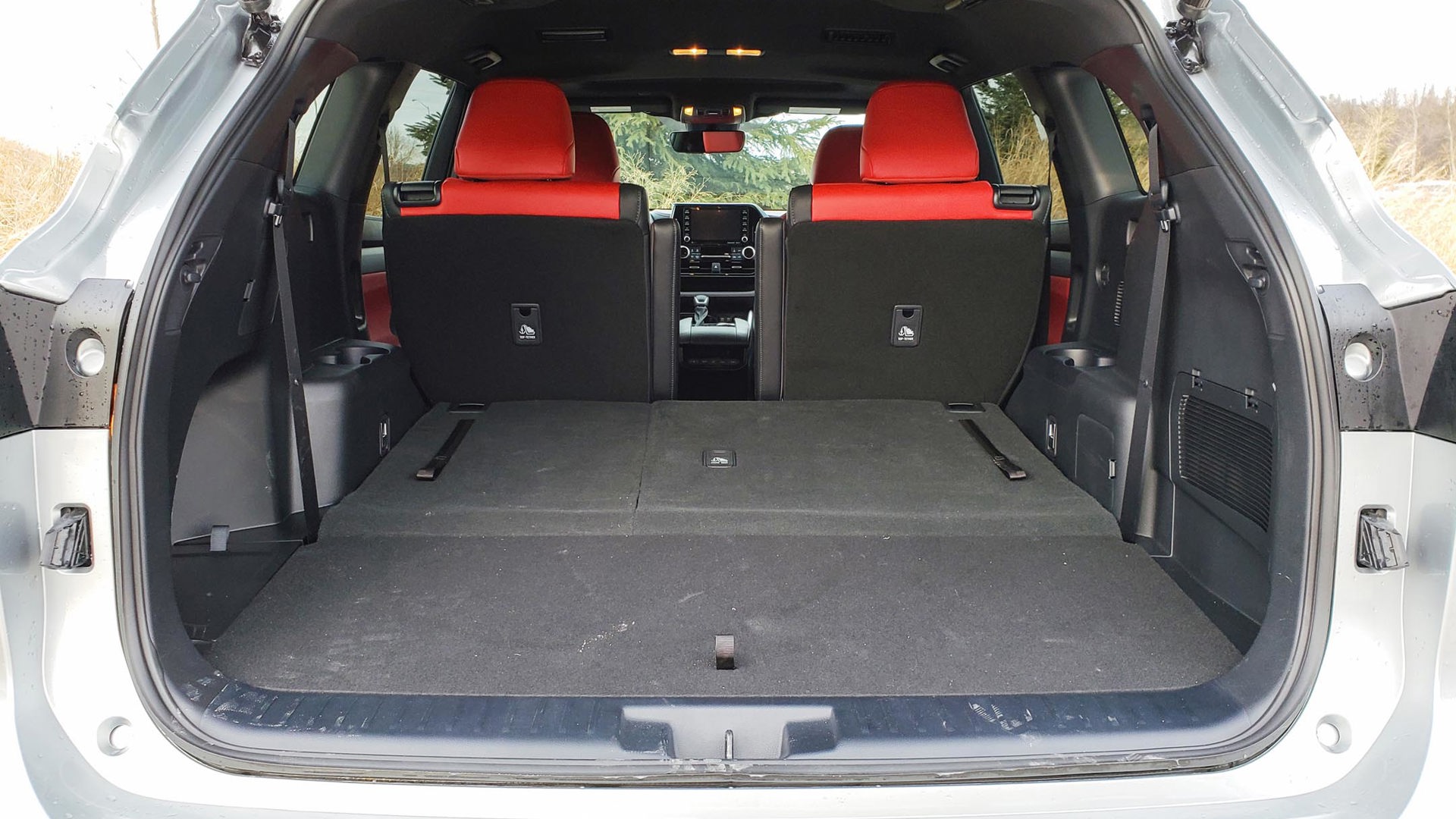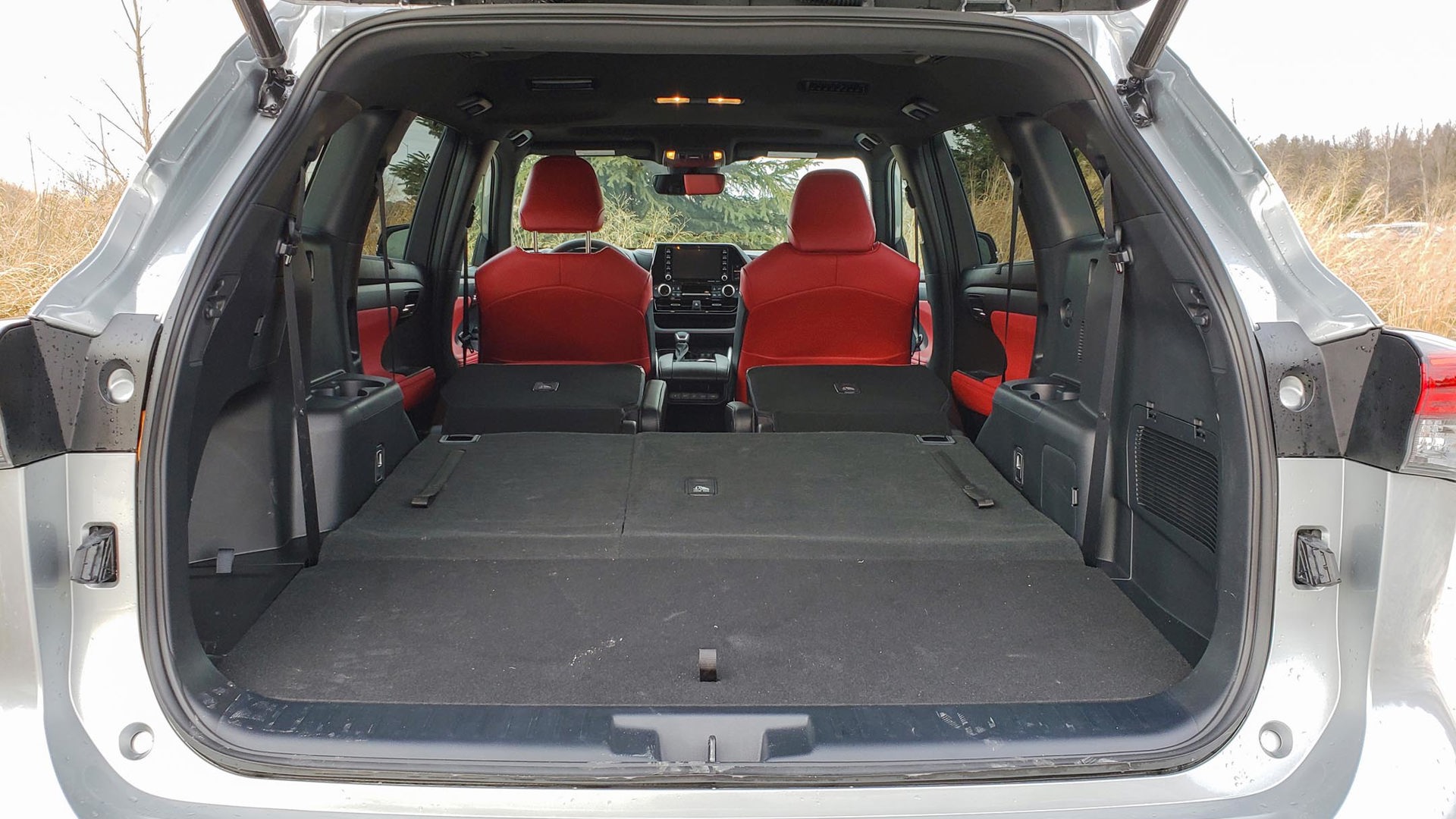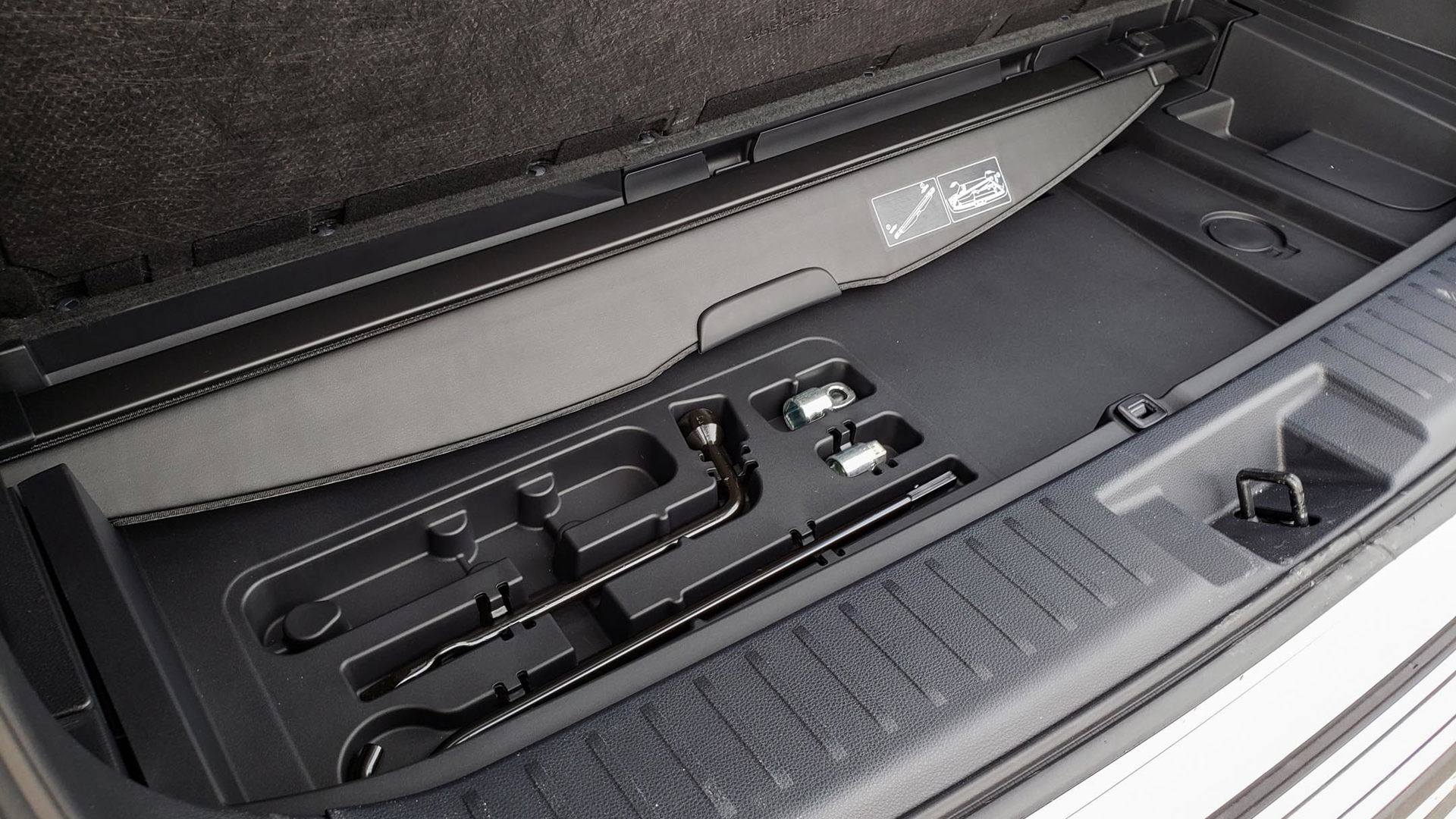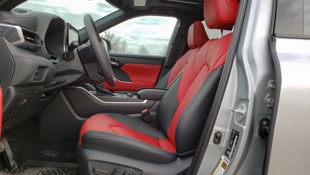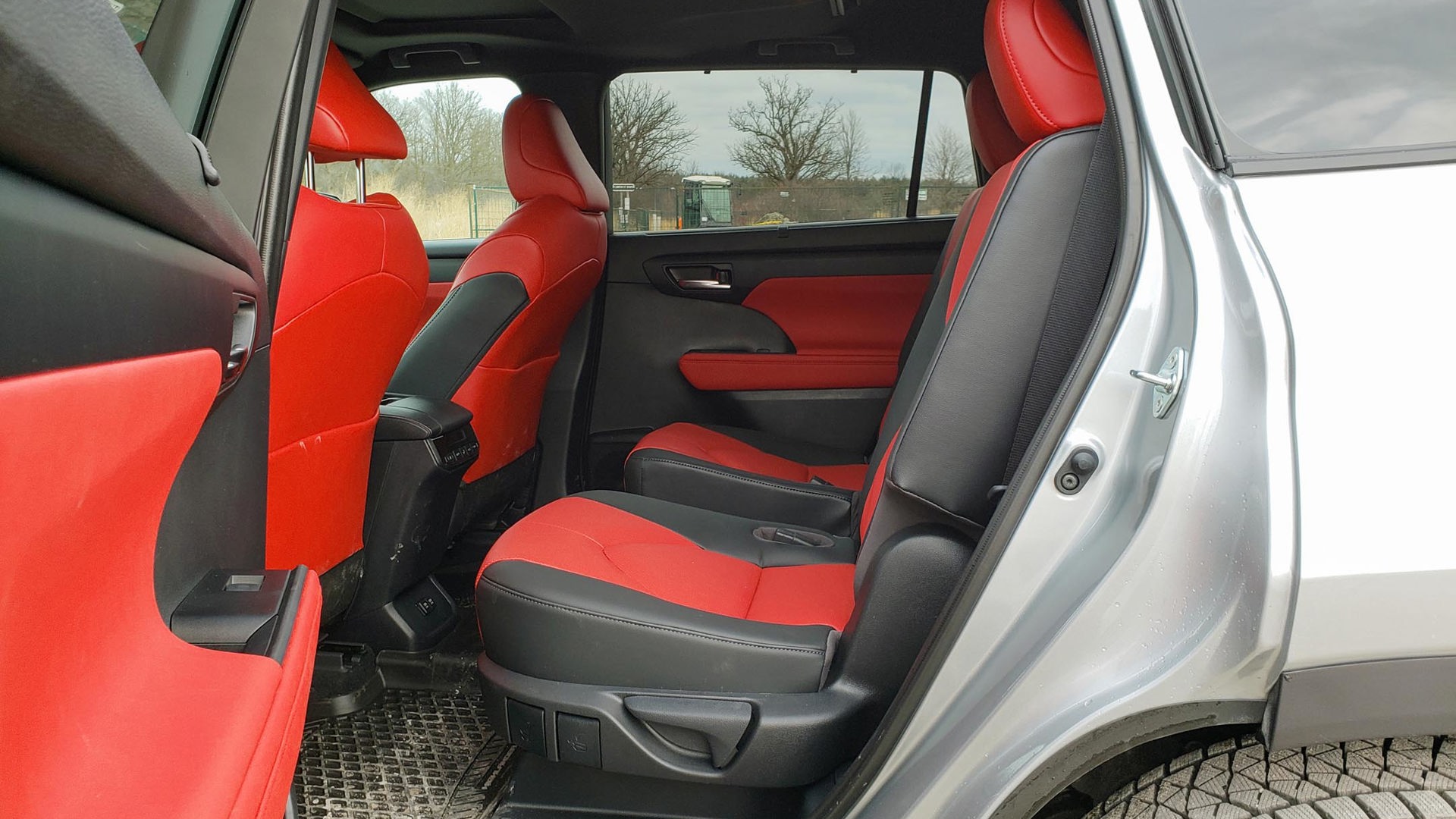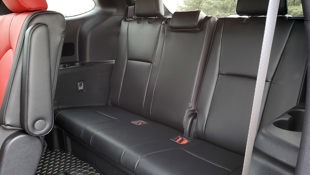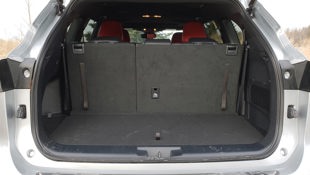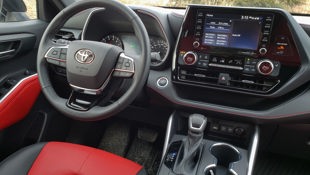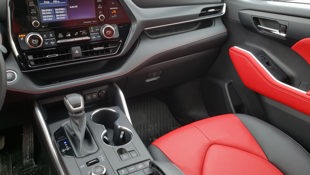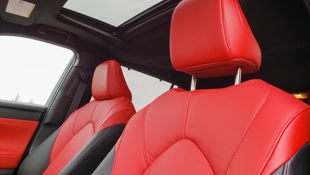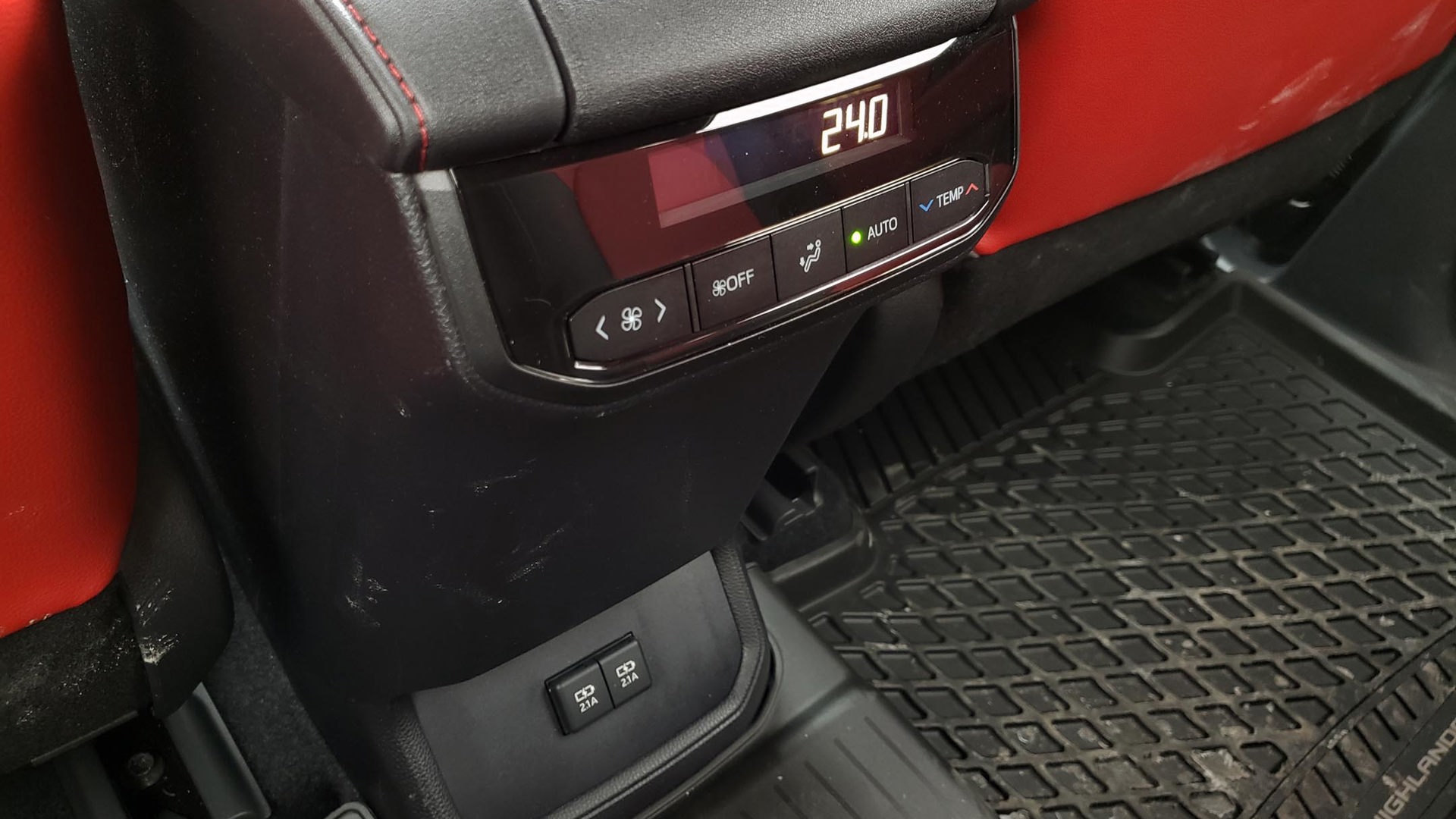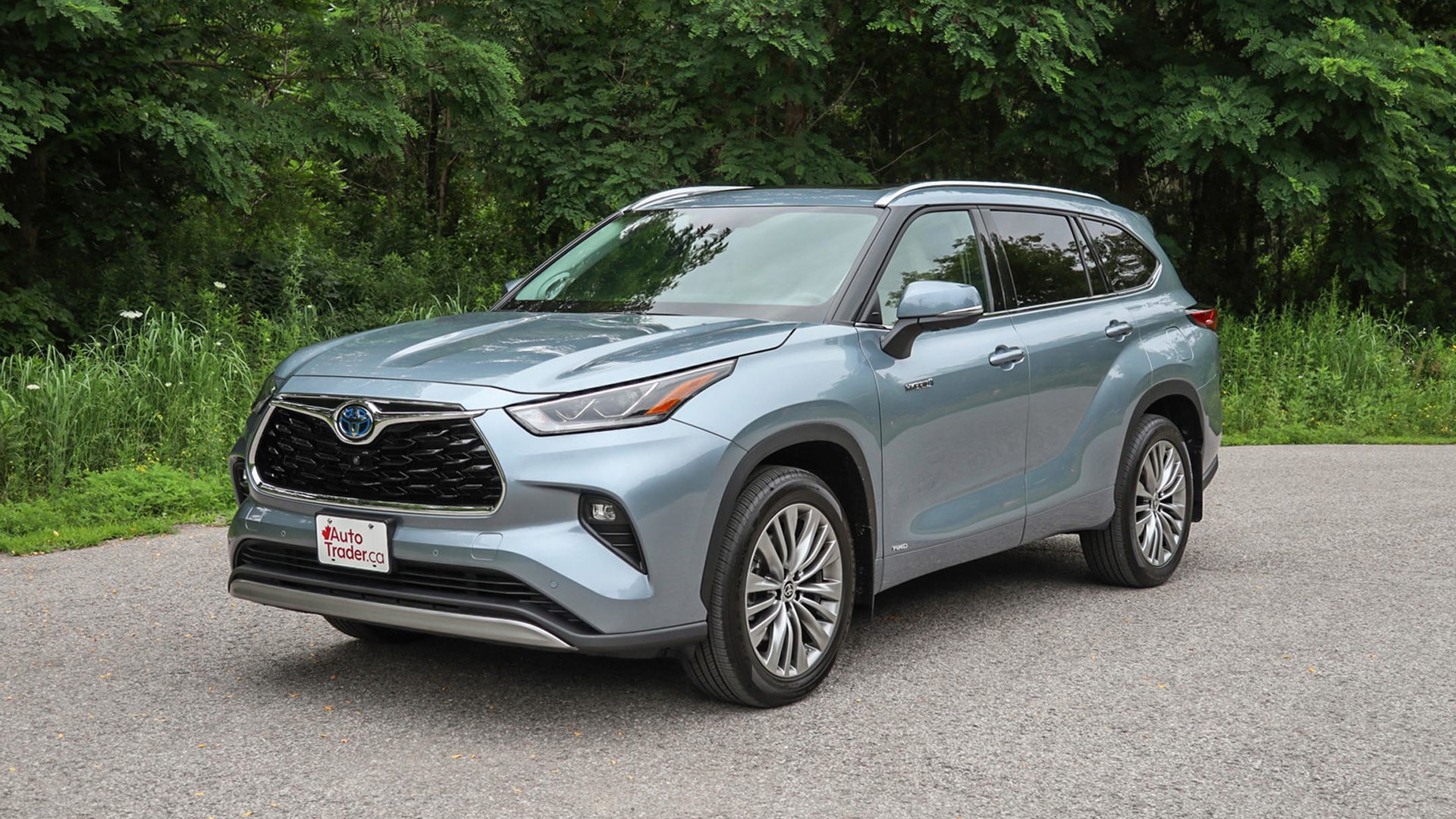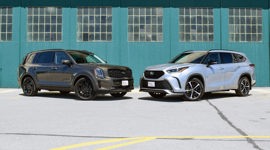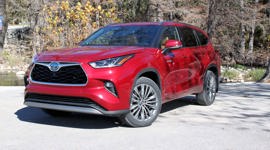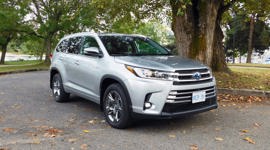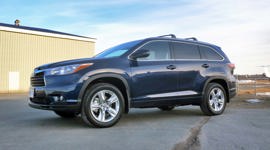 AutoTrader SCORE
AutoTrader SCORE
-
STYLING8/10
-
Safety9/10
-
PRACTICALITY7/10
-
USER-FRIENDLINESS7/10
-
FEATURES7/10
-
POWER8/10
-
COMFORT7/10
-
DRIVING FEEL9/10
-
FUEL ECONOMY7/10
-
VALUE7/10
Oh, what could have been.
The fourth-generation Toyota Highlander is the best version of the brand’s three-row SUV yet apart from one problem: the best possible version of it doesn’t exist. Because while the smaller RAV4 reserves the slick-looking XSE trim and its sport-tuned suspension for the hybrid and plug-in hybrid models, the same packaging is offered here only in gas-powered form. That means the best-handling Highlander features a thirsty V6 that’s not exactly responsive.
The 2021 Toyota Highlander XSE could be one of the best all-around three-row SUVs this size on the market, but without gas–electric power of its own it doesn’t quite reach its full potential.
Styling: 8/10
The current version of the Highlander is a good-looking SUV, with smooth lines, lifted shoulders, and heavily emphasized quarter panels. New for 2021, the XSE trim takes the look a step further with a unique fascia and bumpers, smoked tail- and headlight surrounds, dual exhaust tips, its own 20-inch alloy wheel design, and black roof rails. But it’s in the interior where the XSE stands out the most. The synthetic leather upholstery with bold red inserts is billed as being more durable and sustainable than the genuine article, and it gives this Highlander’s interior an attractive pop of colour.
Safety: 9/10
Toyota’s latest suite of safety features is standard and includes an enhanced pre-collision system that will scan for oncoming vehicles while executing a left turn and brake automatically to avoid a collision if necessary. The same system will also brake automatically to avoid hitting pedestrians mid-turn, and a semi-automated emergency steering system helps in emergency avoidance manoeuvres around pedestrians, cyclists, and other vehicles. Lane-keep assist, lane-departure alert, adaptive cruise control, and automatic high-beams are also included.
Additionally, blind-spot monitoring with rear cross-traffic alert and a rear-seat reminder system are standard. The Insurance Institute for Highway Safety (IIHS) rates the 2021 Highlander as a Top Safety Pick+, though the headlights equipped on the XSE grade are given only the second-best “Acceptable” rating.
Features: 7/10
The XSE trim’s feature content is roughly on par for the expectation at this price point. Several competitors offer more features for a similar cost – most notably the Hyundai Palisade and Kia Telluride – but none offer a sport-tuned iteration like this (even if it is just the suspension that’s tweaked). Heated front seats, second-row captain’s chairs, and a wireless phone charger are included here. However, a heated steering wheel, ventilated front seats, a kick-activated tailgate, a larger panoramic sunroof, and an upgrade from six speakers to an 11-speaker audio system require a step up to the Limited trim, while a head-up display, surround-view monitor, and heated second-row seats can only be added with the Limited’s Platinum package.
User Friendliness: 7/10
The Highlander meets expectations for usability in a three-row SUV, but there are ways that it could be better. The latest Toyota infotainment system includes standard Android Auto and Apple CarPlay functionality (handy, because built-in navigation isn’t included with the XSE grade), but the eight-inch touchscreen, while nicely wide and easy to see, makes the passenger-side switchgear difficult to reach for drivers with short arms. Power-folding rear seats aren’t offered, nor are USB ports for the third row, and there’s no button on the captain’s chairs within reach to help younger third-row passengers to get in and out on their own unless they crawl between the second-row seats. In-cabin storage is minimal, with a smaller-than-average centre console bin and few other spaces for loose articles apart from cupholders.
Practicality: 7/10
Cargo space is larger than in previous versions of the Highlander but remains less than much of its contemporary competition, with 453 L available behind the third row, 1,150 L behind the second row, and 2,455 L behind the first. However, with all of the rear seats stowed, the load floor is completely flat. There are no child-seat anchors in the third row, leaving the two captain’s chairs in the second row as the only anchored positions available.
Comfort: 7/10
Third-row passengers may find that head- and legroom leaves something to be desired and that the seat cushions are on the firmer side. The Highlander’s high shoulder line means the windows back there are small, and the lack of panoramic sunroof means there’s not much natural light. The rest of the cabin makes up for it, though. Although the second-row seats aren’t heated, all four of the forward bucket seats are comfortable and supportive with plenty of head- and legroom.
Power: 8/10
Here’s where we get to the what-could-have-been part. Like all gas-only Highlanders, the XSE is fitted with a 3.5L V6 that produces 295 hp and 263 lb-ft of torque that peaks at 4,700 rpm. This is matched with an eight-speed automatic transmission and a mechanical all-wheel drive system that can send as much as 50 per cent of the available torque to the rear axle and distribute all of that to either the left or right rear wheel. The driveline can also disconnect the rear axle entirely for improved fuel efficiency.
Fundamentally, there’s nothing at all wrong with this powertrain. It provides an appropriate amount of power and drives exactly as one would expect from an SUV of this size, and it contributes to the gas Highlander’s 2,268-kg (5,000-lb) towing capacity. However, given the suspension that’s tuned for improved performance – even while acknowledging there’s only so much performance one can expect from a three-row SUV – the energetic hit of power that the hybrid’s electric motor provides at lower speeds would be a perfect complement to how the XSE model drives otherwise.
Driving Feel: 9/10
The grade-exclusive sport-tuned suspension gives the XSE a driving character unlike any other model in the Highlander lineup. While most Highlanders have a relaxed quality to their handling that leads to some body roll and a tendency to rebound off undulations in the road, the XSE’s tighter dampers keep it firmly planted and responsive without making the ride overly harsh or stiff. This Highlander is the most pleasant to drive of the lot, and it also handles better than most mainstream three-row SUVs on the market.
Fuel Economy: 7/10
Since the Highlander is not available as a hybrid its great handling necessarily comes with a relative hit to fuel efficiency. Natural Resources Canada (NRCan) rates V6-powered all-wheel-drive Highlanders at 11.8 L/100 km in city driving, 8.6 on the highway, and 10.3 combined.
The XSE is on the heavier side of the gas-only models, with a curb weight of 1,996 kg (4,400 lb) – 126 kg (278 lb) more than the base models. This may have contributed to the higher-than-expected 14.4 L/100 km I averaged over my week of testing. The Highlander Hybrid, on the other hand, is rated for a 6.7 L/100 km combined average.
Value: 7/10
Value here is best determined by how much you prioritize drive feel and handling over outright features. If you’re looking for an affordable three-row SUV that’s attractive with a responsive road feel and you don’t mind giving up some bells and whistles to get it, this is the vehicle for you. If this hits the top of your budget and you’d rather spend your money on features like a huge sunroof and ventilated front seats, you’d get more of what you want by looking elsewhere.
The Verdict
Were I to buy any product in this model’s lineup, the 2021 Toyota Highlander XSE is the one I’d choose. But that’s because I love to drive and place a lot of importance on how a vehicle feels on the road – even a larger SUV like this one. There are good reasons to choose it over some of the newer contenders, too, like classic styling and Toyota reliability, even knowing that feature content is less rich than in the competition. But it is a shame that the XSE packaging can’t be bought in a Highlander Hybrid. With the difference in price being roughly $2,000 in higher trims, that could be made up in fuel savings within a couple of years while giving the XSE an even more energetic character.
| Engine Displacement | 3.5L |
|---|---|
| Engine Cylinders | V6 |
| Peak Horsepower | 295 hp @ 6,600 rpm |
| Peak Torque | 263 lb-ft @ 4,700 rpm |
| Fuel Economy | 11.8 / 8.6 / 10.3 L/100 km cty/hwy/cmb |
| Cargo Space | 453 / 1,150 / 2,455 L behind 3rd/2nd/1st row |
| Model Tested | 2021 Toyota Highlander XSE |
| Base Price | $48,750 |
| A/C Tax | $100 |
| Destination Fee | $1,860 |
| Price as Tested | $50,710 |
|
Optional Equipment
None
|
|
